A photographers kit tells a lot about his interests and preferred subject matter so we thought it might be interesting to give you an overview of the team’s current kit(s).
In the past we wrote several “The Team’s favourite lenses articles which might be interesting to you, if you would like to track the development of our interests.
- The Team’s favourite lenses – April 2017 Edition
- The Team’s favorite lenses – October 2017 Edition
- The Team’s favorite lenses – May 2018 Edition
Contents
- Phillip’s kit
- David’s Kit
- Sony GM 35mm f1.4
- Voigtlander Macro Apo Lanthar 65mm f2.0
- Sony G 40mm f2.5
- Zeiss Loxia Distagon 21mm f2.8
- Sony GM 50mm f1.2
- Sigma C 100-400 f5-6.3
- Zeiss Apo Sonnar 135mm f2.8
- Sigma Art 85mm 1.4 DG DN
- Sony GM 14mm f1.8
- Sony GM 24mm f1.4
- Sony Carl Zeiss Sonnar T* 35mm f2.0
- Sigma C i 90mm f2.8
- A few others that almost made 10
- Vintage lenses
- Juriaan’s kit
- Bastian’s Kits
- Janniks Kit
- Final Words
Phillip’s kit
| Lens | Number of Pictures | Share |
| Voigtländer 1.2/40 | 631 | 36% |
| Sigma 100-400mm F5-6.3 DG DN | 429 | 24% |
| Sigma 35mm F2 Dg Dn | 292 | 17% |
| Zeiss Loxia 2.4/25 | 105 | 6% |
| Voigtländer APO Macro 2.5/110 | 99 | 6% |
| TTArtisans 1.4/50 | 87 | 5% |
| Samyang 1.8/75 AF | 58 | 3% |
| Sony FE 4/16-35 ZA | 34 | 2% |
| Voigtländer 3.5/21 | 23 | 1% |
Breakdown of my three star images taken in 2021 by lens used
Voigtländer 1.2/40 (most used lens by some margin)
It has been my most used lens for years now. It got some competition by the Sigma 2/35 and TTA 1.4/50 but it at least outcompeted the Sigma for me.
In early 2021 my daughter was born and that has of course changed my life and with it my photography. Maybe 50% of the images I take are of her and here the compact Voigtländer again showed its versatility. For portraits the bokeh is almost always very smooth. If I focus very close I sometimes like the softer look caused by much increased SA and when I don’t I stop down to f/1.7 to get rid of it.
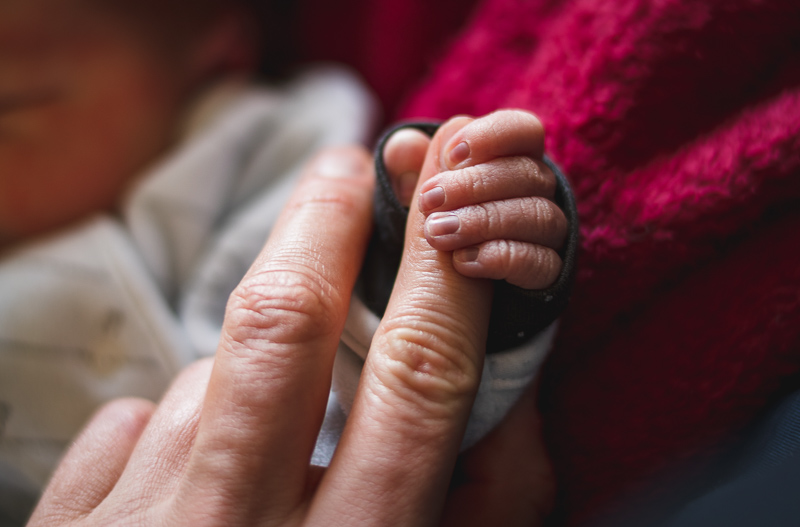
Before my daughter was born and when she was very young and sleeping a lot, I did many photo rides. Most often with the 1.2/40 and the Sigma 100-400 in my sling bag. I would like to bring my Loxia 2.4/25 as well but that doesn’t fit in the bag so I am happy to stitch when the 40mm are too narrow.
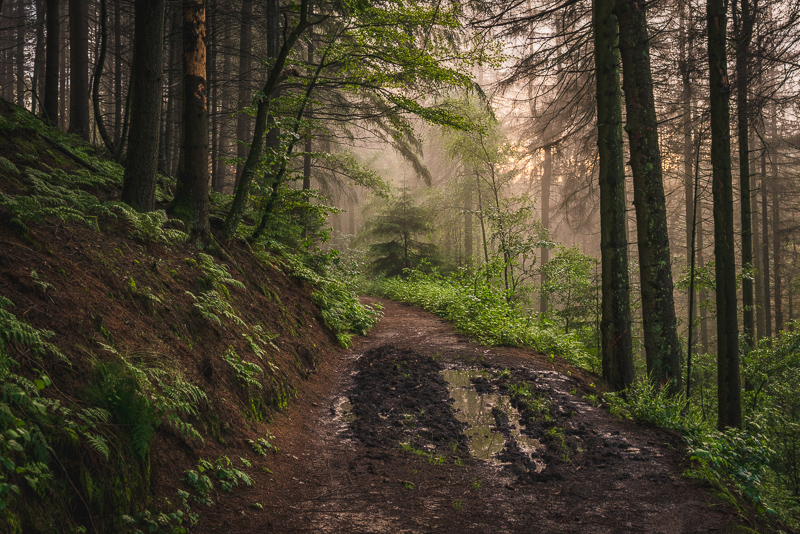
At the moment I enjoy many walks with my daughter. These are usually 4-5km so the subject matter I have available is limited. But I get to be with her and my camera out in nature. Who could wish for more? Here I either take just the 1.2/40 in a very small bag or the Sling Bag with it and the Sigma 100-400.
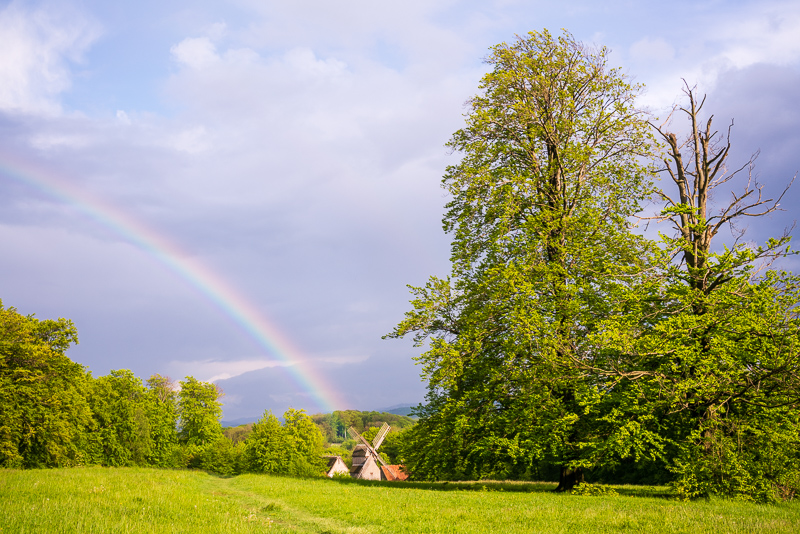
Sigma 5-6.4/100-400 DG DN OS
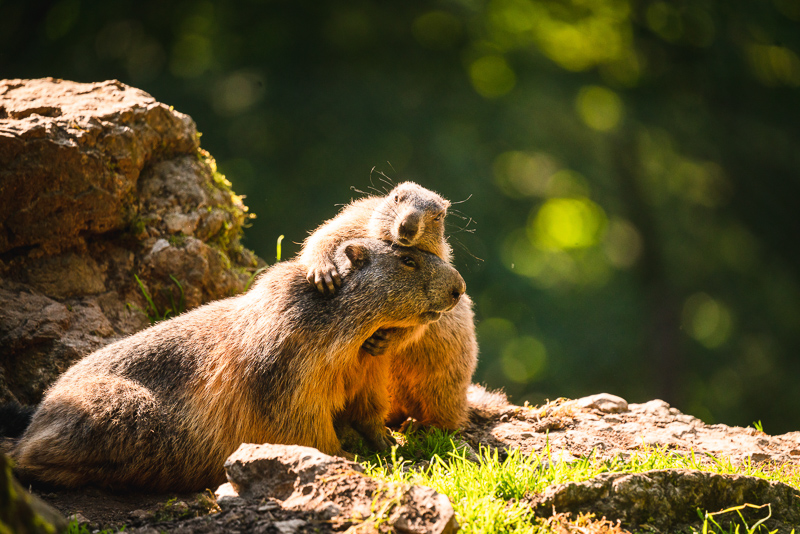
The first lens I bought in 2021. E-mount for a long time lacked affordable, yet good tele options so I stayed with my Canon FD 4/300 L. After Jannik was very happy with the optical performance of the Sigma I decided to give it a try and it has become my second most used lens in 2021 and I don’t see it being replaced too soon. To me the most important characteristic is the relatively compact size which allows me to fit it into a sling bag combined with very good performance.
Animal photography isn’t my focus but I am happy to have a 400mm lens with me, when an opportunity arrises. More often I used the 100-400 for landscape photography.
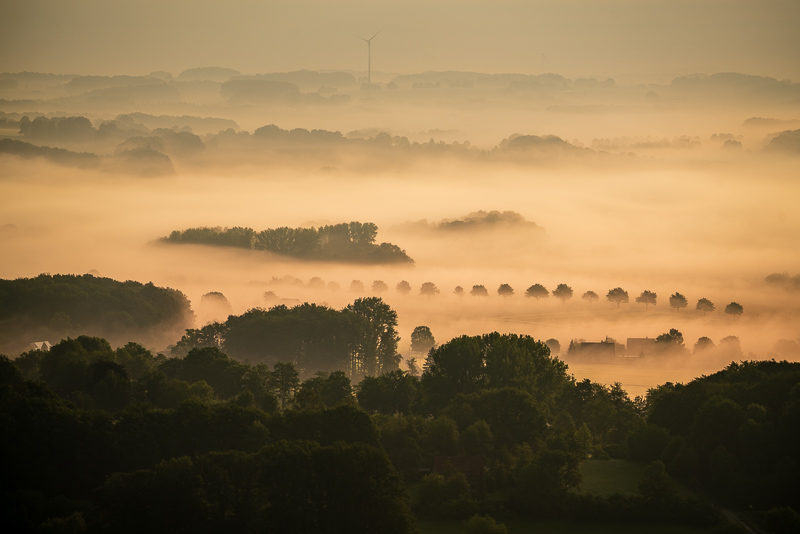
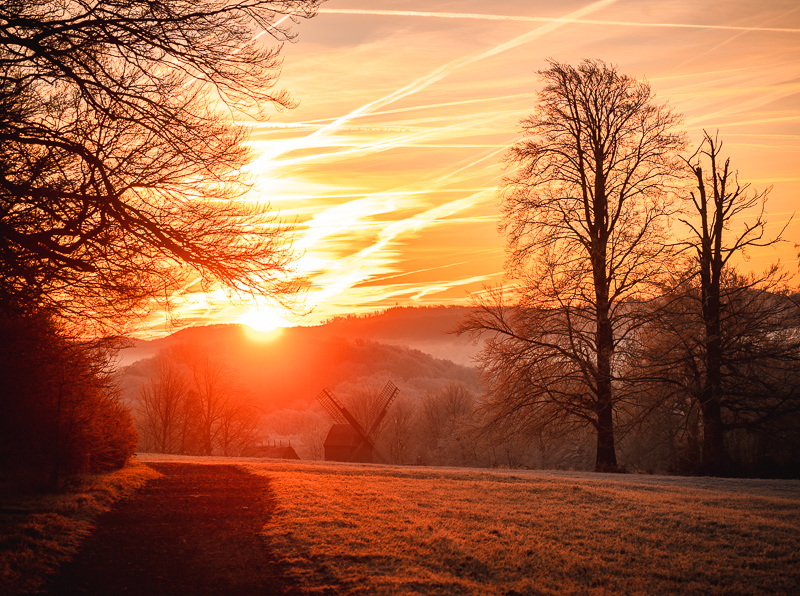
Sigma 35mm F2 DG DN
The second lens I bough in 2021. I was intrigued by the better across the frame sharpness and smoother corner-bokeh compared to my Voigtlander 1.2/40.
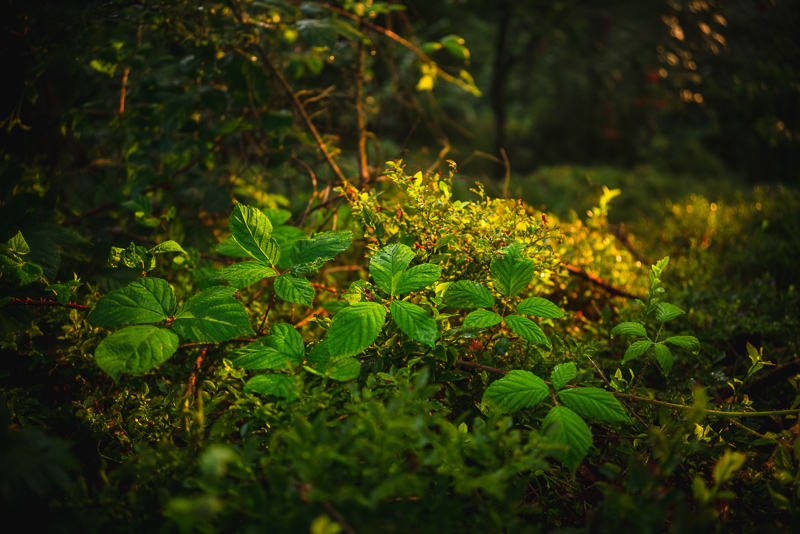
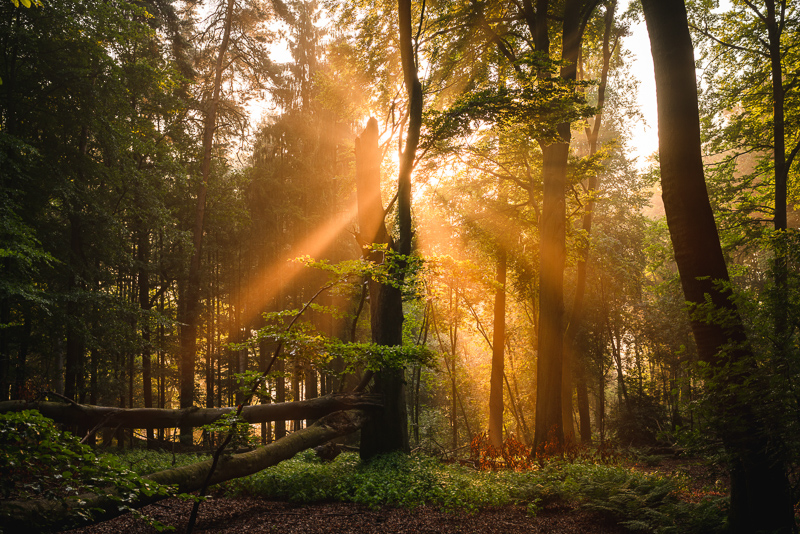
I am not quite sure why in the end I went back to the Voigtlander. It probably comes down to nicer manual focus, more blur and better sunstars. I will probably hold on to the Sigma for now, so that I have a good AF-lens around 35mm for when I get a camera with more capable AF than the a7RII.
TTArtisan 50mm 1.4
The third lens I bought in 2021 was the surprisingly affordable TTA 1.4/50. I bought it because Bastian’s very positive review made me curious and I wanted to try a 50mm lens with very good rendering against my CV 1.2/40.
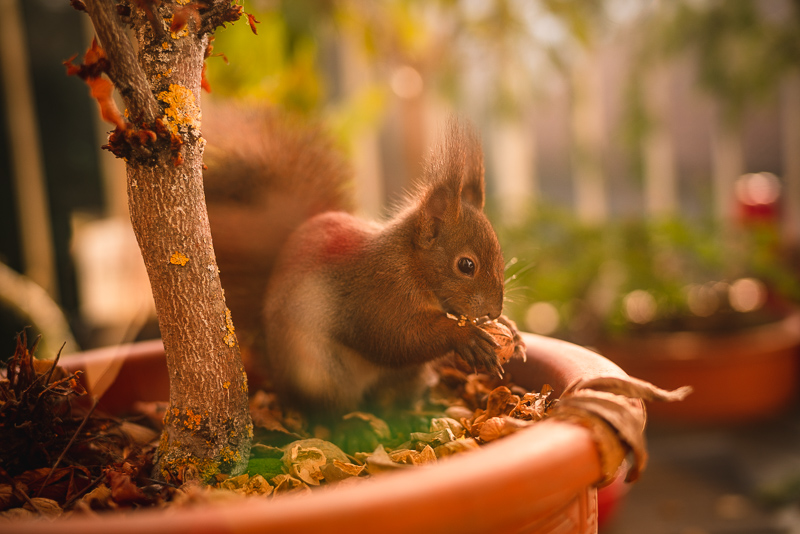
After using it quite a lot in November and December I can only second Bastian’s review: You get excellent rendering, good enough sharpness, very good handling and a below average flare resistance for surprisingly little money.
50mm seem to work nearly as well as 40mm for me when shooting just one lens, so given the very low price I will keep the TTA for the moment for those occasions when its focal length or excellent rendering weight more than the Voigtländers electronic contacts, better flare resistance or focal length.
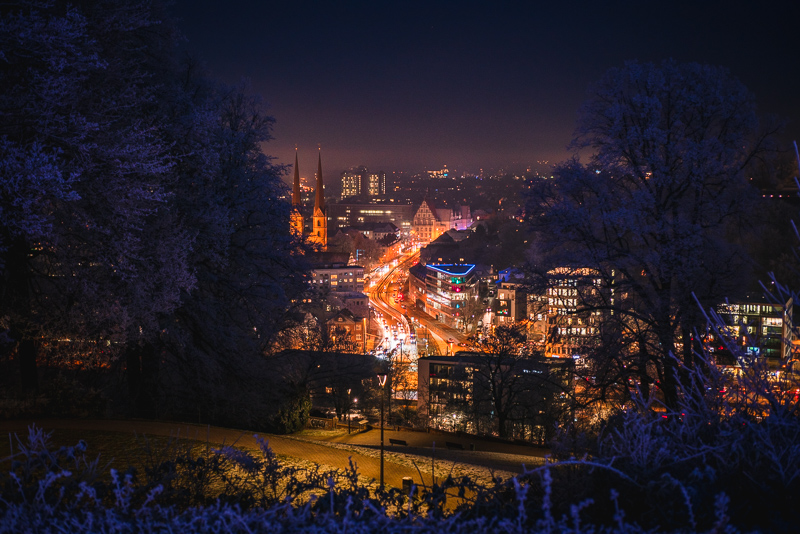
Other lenses
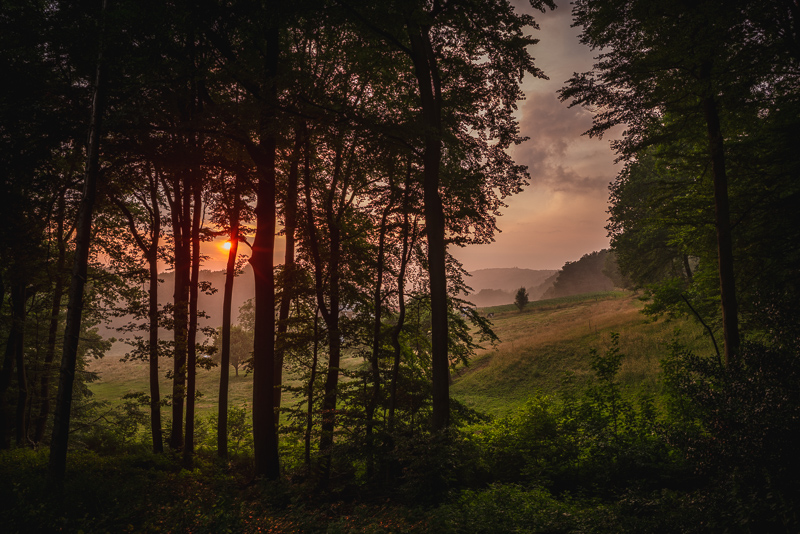

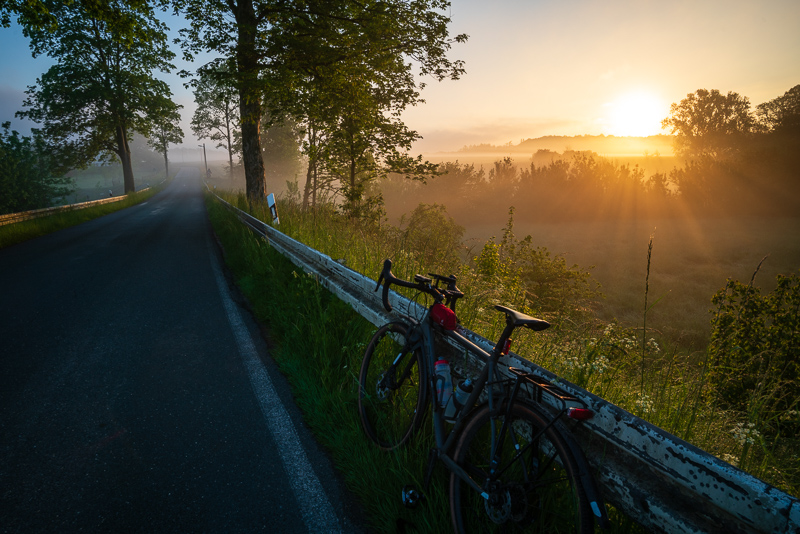
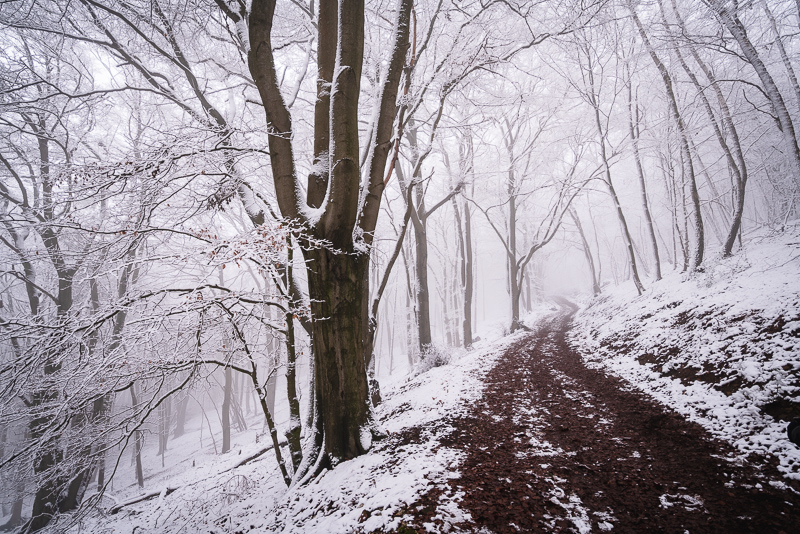
Samyang 1.8/75: Will go soon since I don’t even have a picture for it.
Legacy lenses: I haven’t taken a 3 star image with a legacy lens in 2021. I had sold off most of the more expensive ones in 2020 and will probably sell most of the rest in 2022.
David’s Kit
Well it’s been another year of working from home, mainly in the country, so travel lenses and even multi day hiking lenses haven’t had much use! So these images will all be from our little town, and the surrounding wilderness. I’ve decided, like Philip to think in terms of which lenses produced the most 3+ star images in my Lightroom catalogue. Three stars in my ranking means I don’t mind sharing them – fewer than three means I am keeping it for some reason but not good enough for the public! More than three, which is rare, is the stuff I really like!
Sony GM 35mm f1.4
The most 3+ images goes to a newcomer for me: the GM35 with 31 3+ images. I was surprised to find this. I guess it shows how this lens has become the “new normal” for me. It’s my by default lens, something made possible by it’s relatively light weight, and made desirable by it’s sharpness and rendering.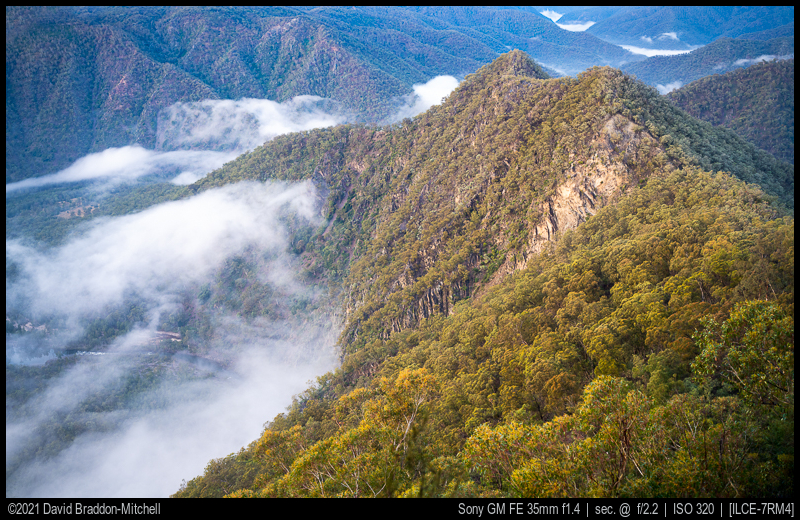
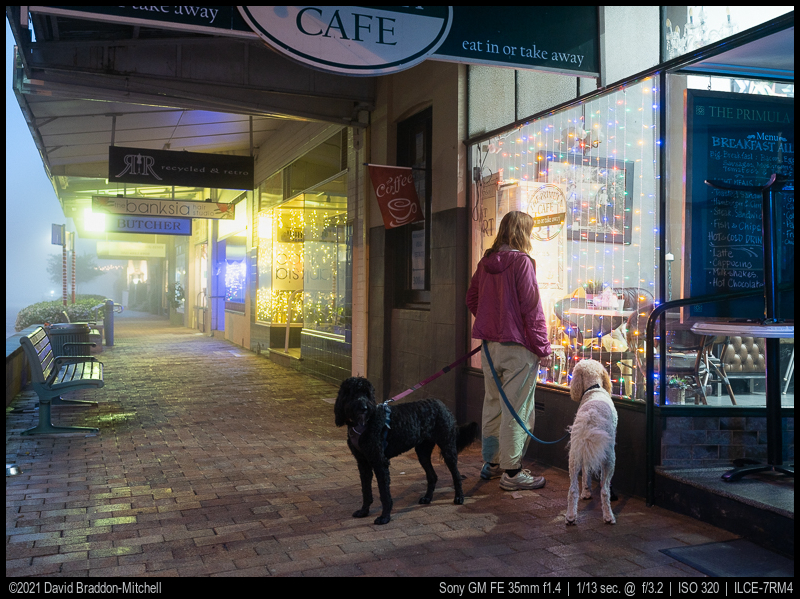
Voigtlander Macro Apo Lanthar 65mm f2.0
Second with 29 3+ images comes from and oldie and a goodie, the CV 65mm Macro Apo Lanthar. I think it’s come up this year because with my walking being confined largely to day walks or half day walks, the size of the lens is no concern, the macro very useful for botanical stuff, and the quality is of course superb. In another year the 50mm f2 Apo Lanthar which I also (somewhat indulgently) have might beat it because of being a bit smaller.
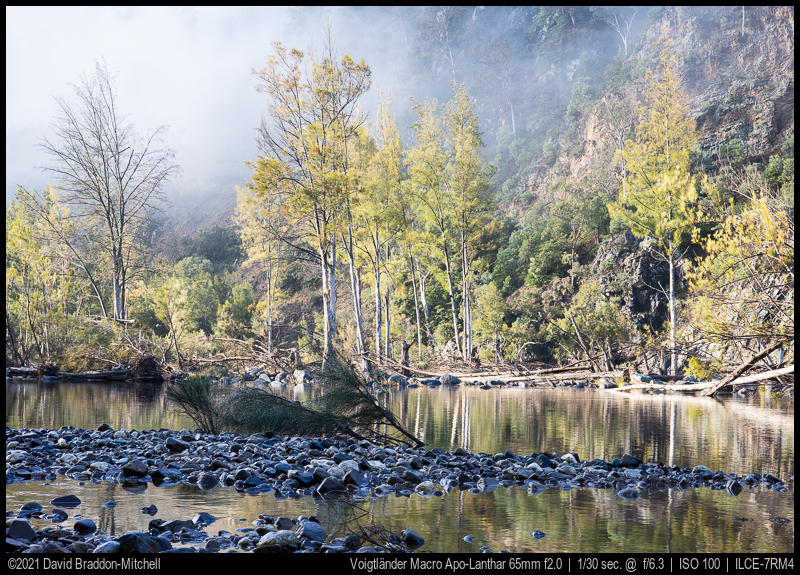
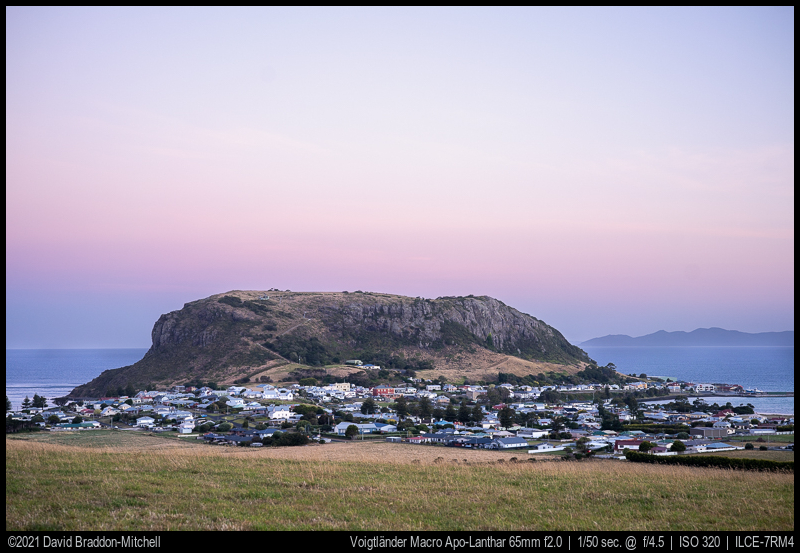
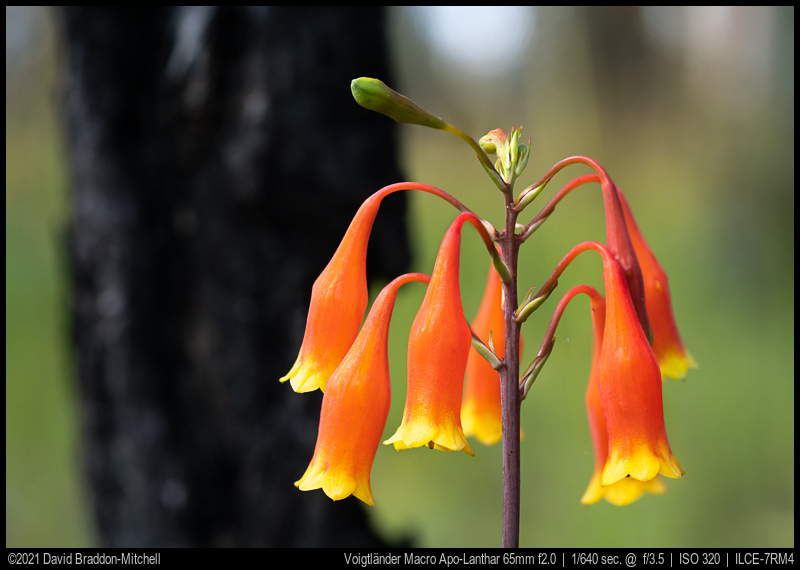
Sony G 40mm f2.5
Next is another newcomer, with 22 images in the 3+ class. It’s really won me over and I have only had it for about half the year. It’s really sharp and contrasty, the bokeh is decent – better than most vintage lenses, not quite as good wide open as the best faster lenses stopped down to f2.5, of course. But it’s tiny and super light. At mid apertures it’s far preferable to my CV 1.2/40, but of course doesn’t give you the wide apertures. But the ergonomics are great, and I just keep packing it.
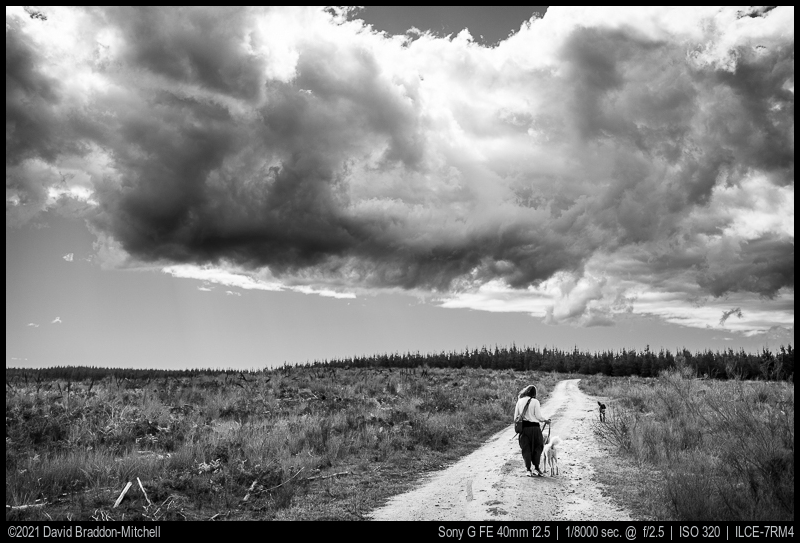
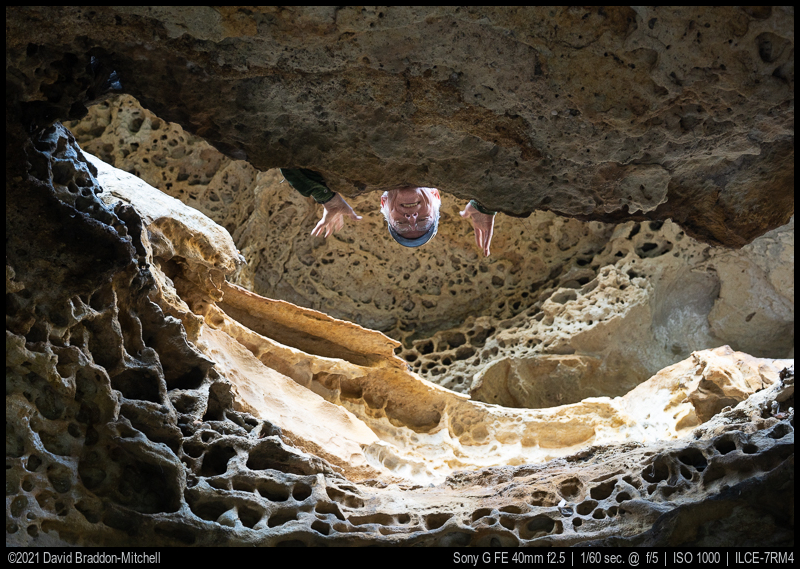
Zeiss Loxia Distagon 21mm f2.8
What can I say? Just one image behind is the Loxia 21 which just keeps on giving. Perhaps there are lenses as good now (maybe the Sony G 20mm, or the new Sigma i 20 when it comes out?) but I don’t care. It does everything I need and I expect to see it in this list for years to come.


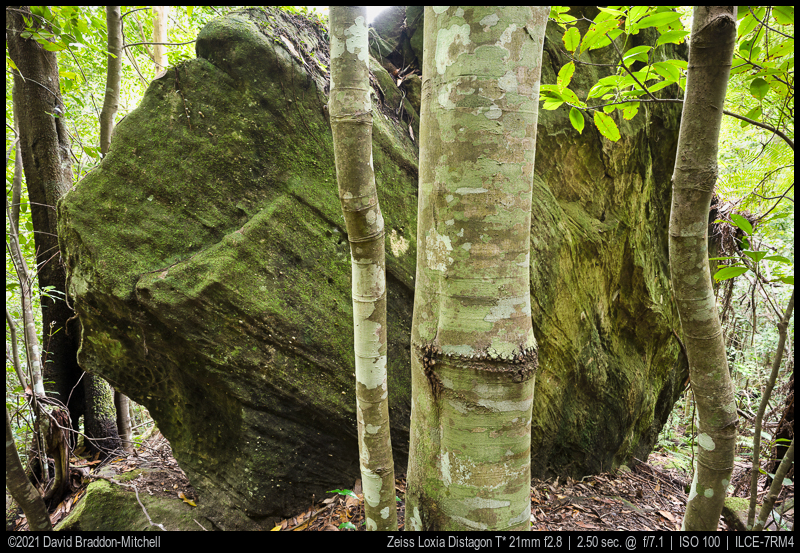
Sony GM 50mm f1.2
Keep meaning to review this, but publishable portrait samples are hard to find. Suffice it to say that I think it’ll be a long time before a better super fast AF 50 comes along.
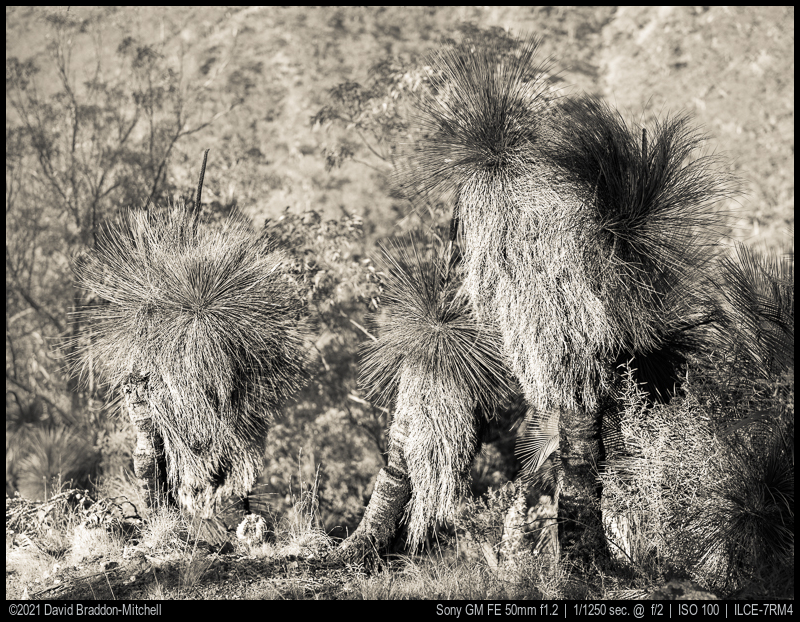
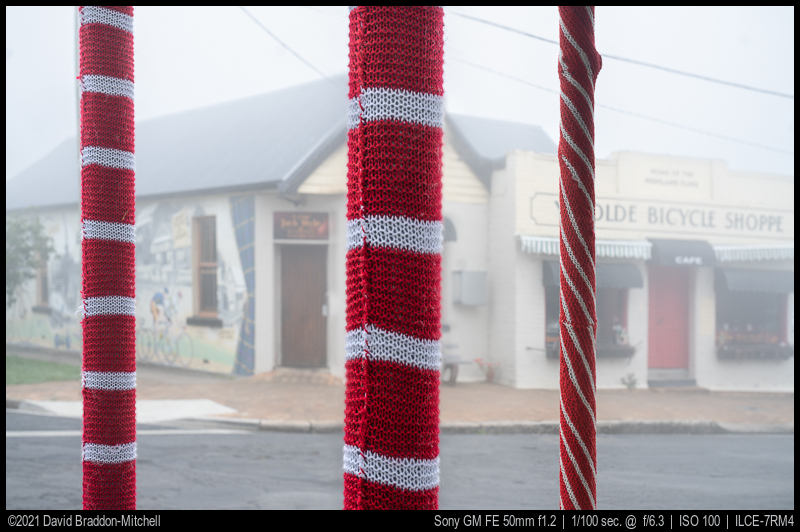
Sigma C 100-400 f5-6.3
This lens fascinates me: in part because of what it says about me. No it’s not the very best long tele you can get. But I don’t use them enough to justify spending the money for that. But it’s well priced relatively light, and small, and the results are great. It makes me wonder how much I’d notice if I “downgraded” the lenses in my more used focal length ranges!
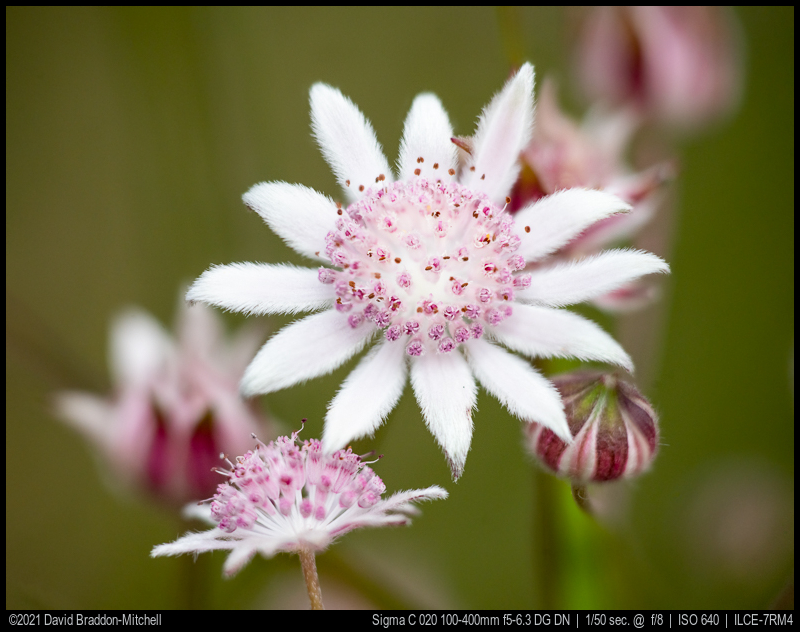
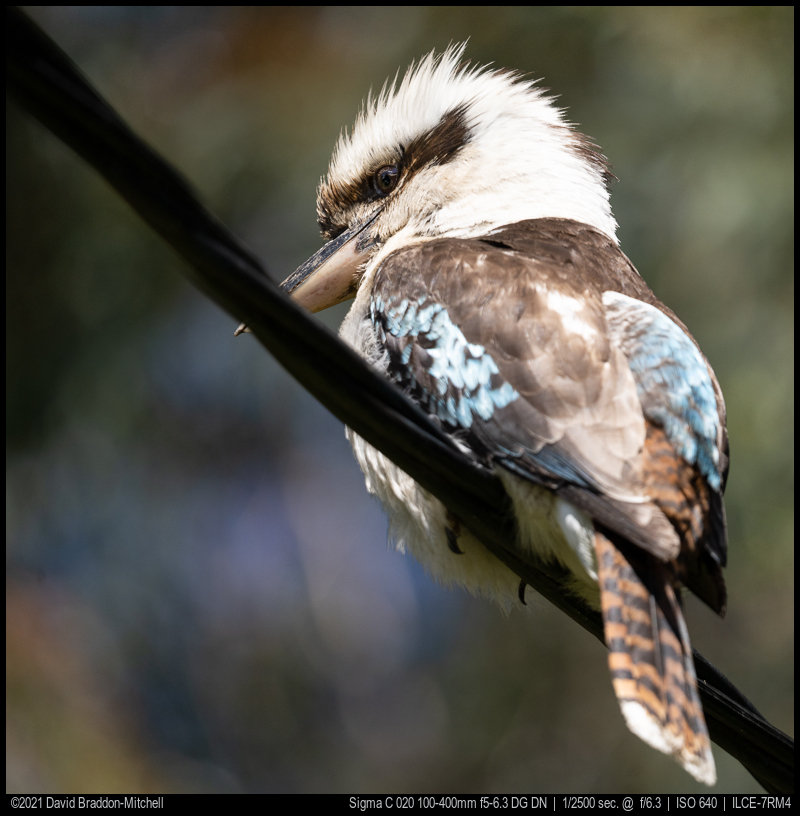
Zeiss Apo Sonnar 135mm f2.8
Still seems to be producing the keepers. I think it’ll be a while before anyone makes another top quality 2.8/135 prime, which I still like as a smaller lighter alternative to an f2.8 zoom. It’s a pity, because I guess Sony could make a G version even lighter now.

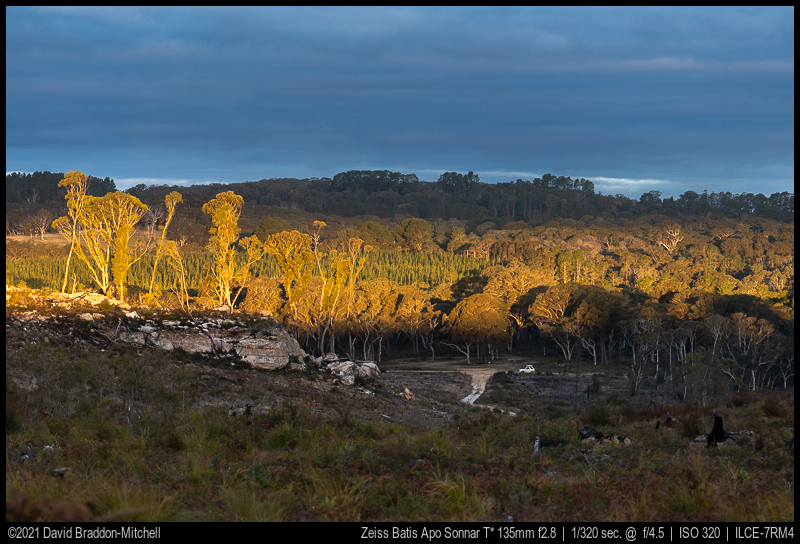
Sigma Art 85mm 1.4 DG DN
Surprisingly light for a fast 85, and impeccable quality. People like to complain about the distortion, but I’ve very carefully compared crops before and after distortion correction, and can’t see a difference. A terrific lens. Just recently I’ve been using it less because I’ve got the new Sigma i90, which is about as good for stopped down work, and a delight to use because so small. But when you need an f1.4, this is the one to have.


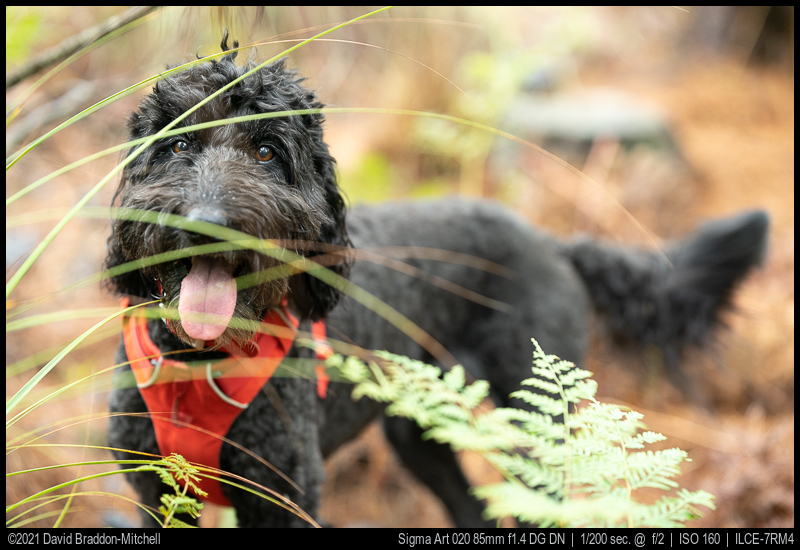
Sony GM 14mm f1.8
Relatively new acquisition, but it still managed to have more than 10 keepers for the year, which is my cutoff for this article. Remarkably sharp. So much so you can crop a bit – say to 19mm or so – and resize and not lose much, which makes it almost as versatile as a zoom, in a much smaller package.
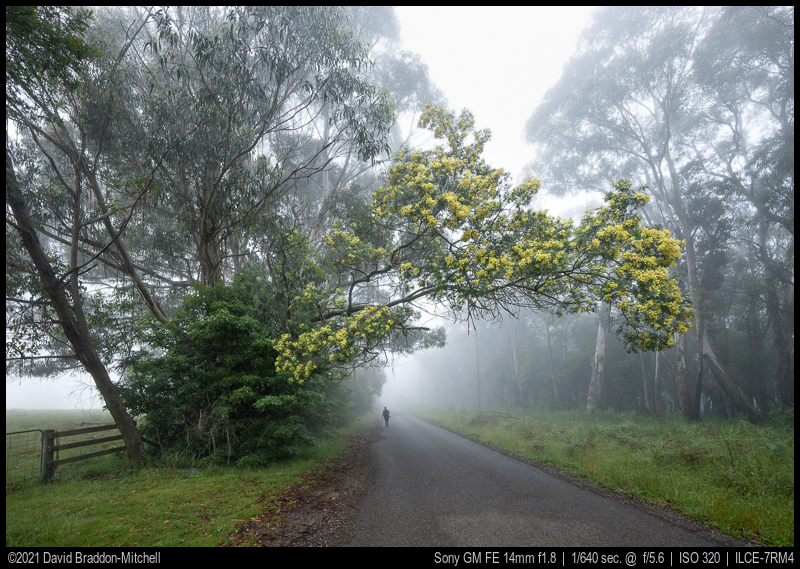
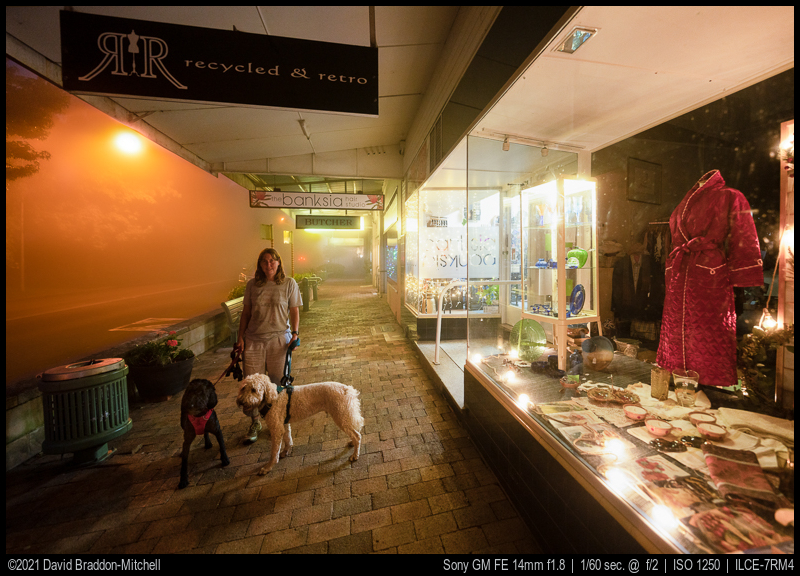
Sony GM 24mm f1.4
For some reason I’ve been using the GM 24 much more than the Loxia 25 this year: perhaps because of not travelling. It is pretty impeccable: the tiny things you see in testing have never affected an actual image. I wonder if there’s slight sample variation between my copy and Juriaan’s; I don’t have any issue with corners stopped down even a little, and if anything a little less CA than the superb Loxia. Either slight sample variation, or he’s pickier!
Sony Carl Zeiss Sonnar T* 35mm f2.0
The RX1mk2 has been my bike ride camera for the last couple of years. The Sony Zeiss lens on it is famous for very nice bokeh, which it does have. I like it a lot, and it got a lot of keepers, but it may not last in my kit. I have got a nice handlebar bag that will fit my main body and a couple of lenses, which is more flexible, and saves a lot of money.

Sigma C i 90mm f2.8
This one didn’t quite scrape the 10 3+ star images required to feature, but only because I got it very recently. It’s fantastic to have such a tiny lens of outstanding quality and I expect to use the Sigma 1.4/85 less often now – only when very wide apertures are needed. And my ZM 85 and Loxia 85 are looking nervous. I haven’t carefully compared, but the Loxia is while possibly better, but if so, not by much. Should I keep it?
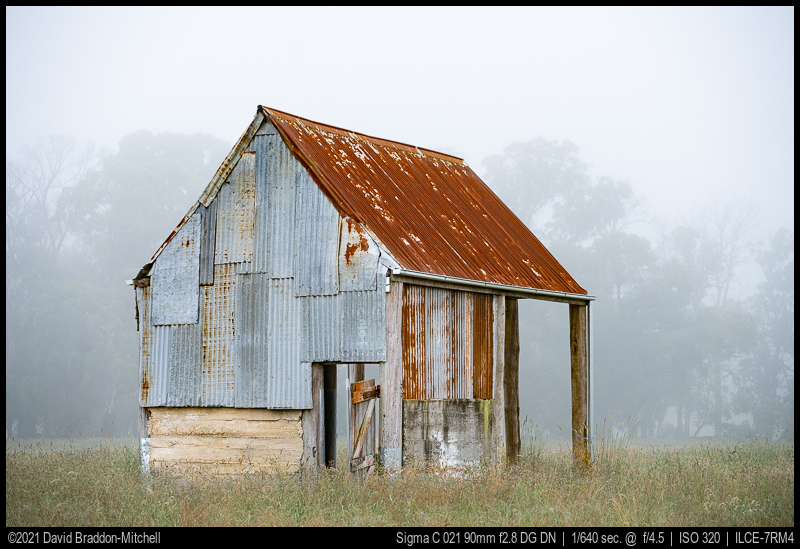
A few others that almost made 10
The Voigtländer 50mm f2.0 Apo Lanthar is a great lens. The only reason it didn’t get to make more than 10 3+ star images is that without travel, its compactness was less important than usual. Still, it made some of my favourites like this one from Christmas Morning.
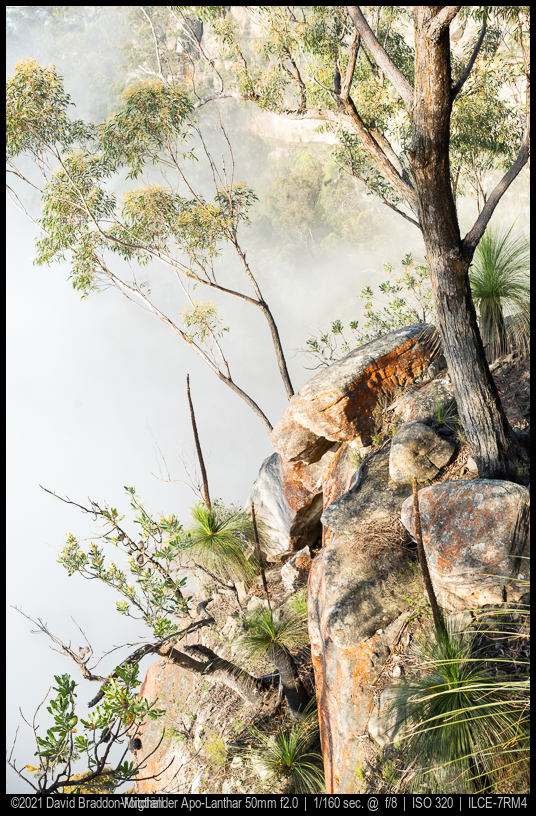
The Zeiss Loxia Biogon T* 35mm f2.0 is a lens I’ve had almost from the beginning of using Sony, and has been responsible for many of my favourite images. Stopped down a bit it is gorgeous, but wide open the polite description might be “vintage rendering”. It still managed almost ten images, but I question if I should keep it, as the apart from sunstars the GM35 is as good or better stopped down, and much better at wide apertures. And if I want a slightly smaller manual 35, the Apo Lanthar 2/35 is something I should maybe upgrade to.
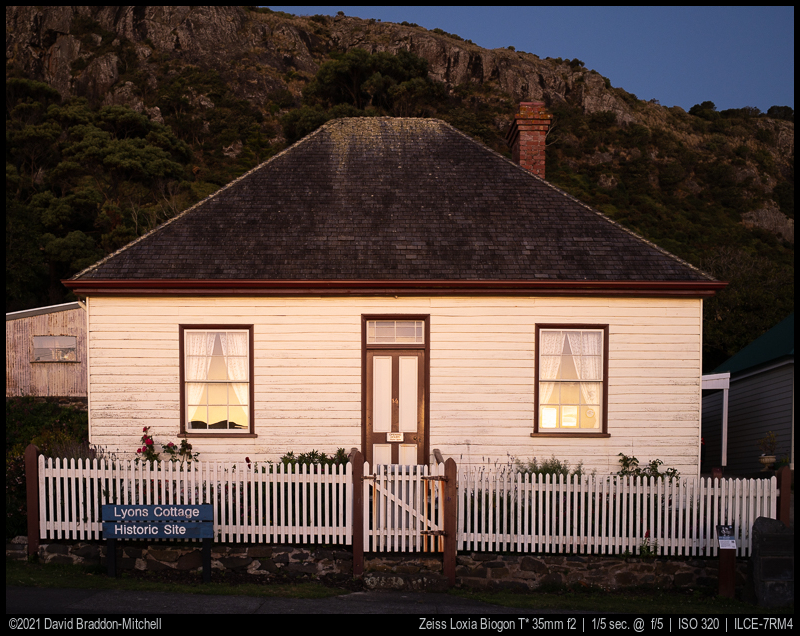
Vintage lenses
No single vintage lens produced ten 3+ star images, but as a category they produced more than any one lens, so they should get a mention. Here are a few images, including one bonus film image (I’ve been playing around with my old OM film bodies). I guess if there is one thing which characterises how my relationship to vintage glass has changed it’s that I’m using the really good ones less – why use those when modern ones are even better – and concentrating on ones with more aberrations that in some moods can be quite pleasing.
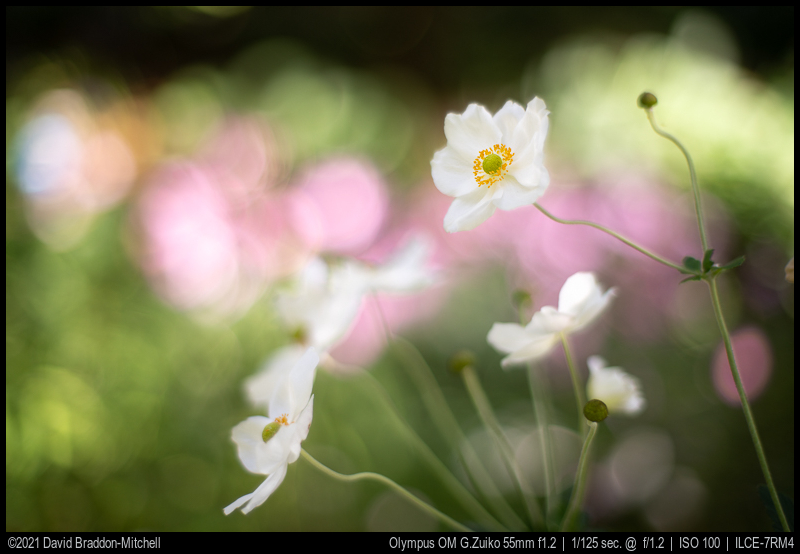
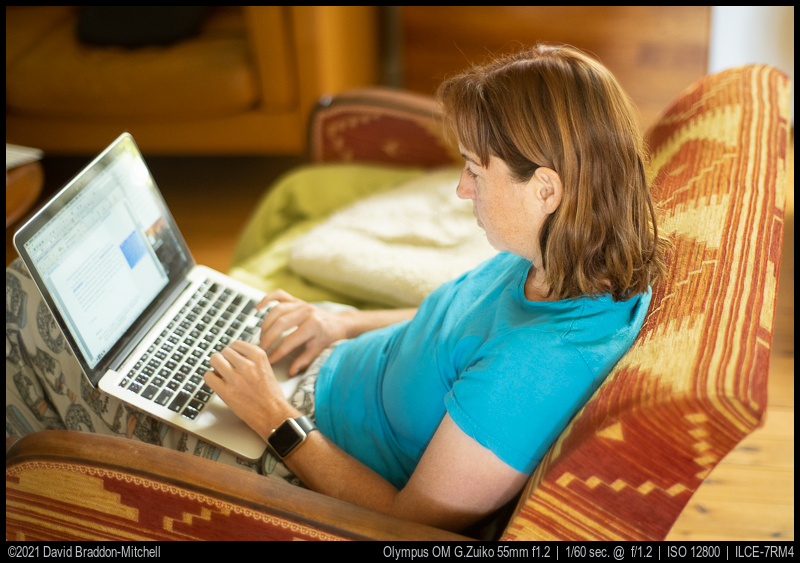

Juriaan’s kit
2021 was a very busy year, I bought a house which cost a lot of time and money I could not spend at photography. As a result of this I didn’t take many pictures in the Netherlands this year. However, I managed to take a few good trips to Austria where I took a lot of images.
I only bought two lenses in 2021, the Takumar 2/50 and the surprisingly good TTartisans 1.4/50.
Currently I roughly use 3 kits:
Hiking kit
- Sony GM 1.4/24
- Zeiss Loxia 2/50
- Canon nFD 3.5/135
Standard kit
- Sony GM 1.4/24
- TTArtisans 1.4/50
- Sigma Art 1.4/85
Landscape kit
- Voigtländer 4.5/15
- Sony GM 1.4/24
- Zeiss Loxia 2/50 or Sigma Art 1.4/85
- Sony GM 100-400
Sigma 85mm f/1.4 DG DN Art
I was a bit lazy this year so I didn’t rate my pictures in Lightroom with stars. Still I’m pretty sure the Sigma 1.4/85 which I bought at the end of 2020 delivered most of my keepers.
The Sigma is small and light for an AF 1.4/85 and therefore it easily finds its way into my bag. The lens is very sharp from wide open with already very good corners at f/1.4. Stopped down to f/4 even the extreme corners are as good as it gets. The Sigma renders very smooth bokeh and CA or bokeh fringing are virtually absent. Distortion is high, but this lens is so sharp that I could barely see any difference, even zoomed in, after the distortion correction.


Sony 24mm f/1.4 GM
The 1.4/24 from Sony is still my favourite travel lens. During long hikes it is glued to my camera. I really like the focal length, and at f/1.4 there is enough blur for environmental portraits.
I often pair the 1.4/24 with the 1.4/85 as a two lens kit.
So far I’ve only noticed two real drawbacks, purple fringing can be pronounced in difficult situations, and corner sharpness, though sufficient, isn’t really great. This might be due to sample variation as Davids sample seems to be significantly sharper with less CA.
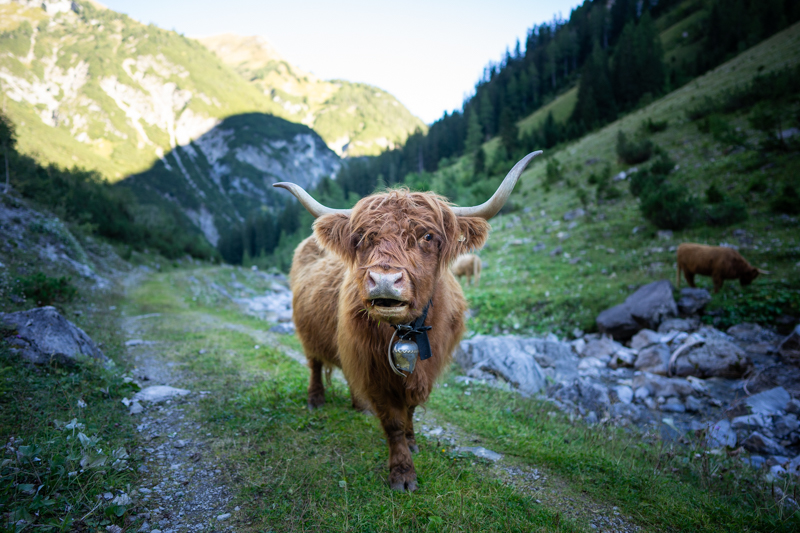
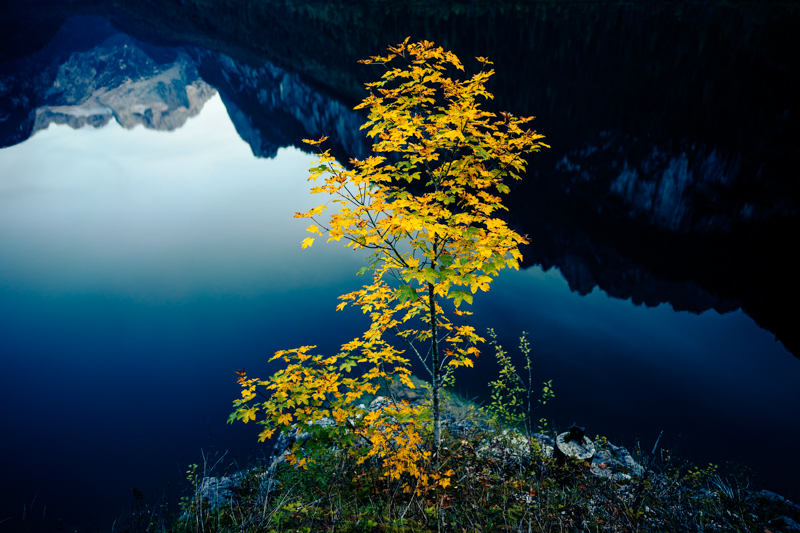
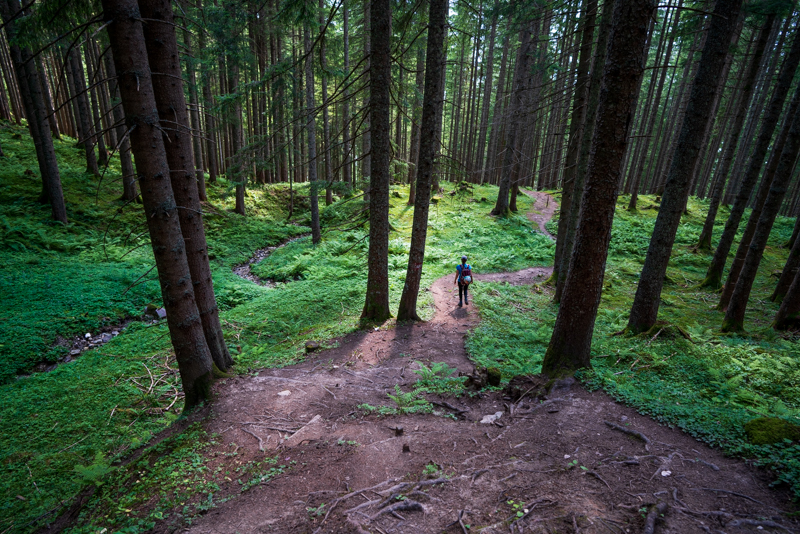
Sony GM 100-400
I mostly used this lens for close up photography and tele landscapes this year. The short MFD proved to be very handy and this is the reason that I didn’t trade it in for the cheaper and lighter Sigma 100-400. Especially in the alps I took some images that I really like with this lens. It is very nice as a landscape tele and great for some occasional wildlife photography, although even 400mm is a bit on the short side.
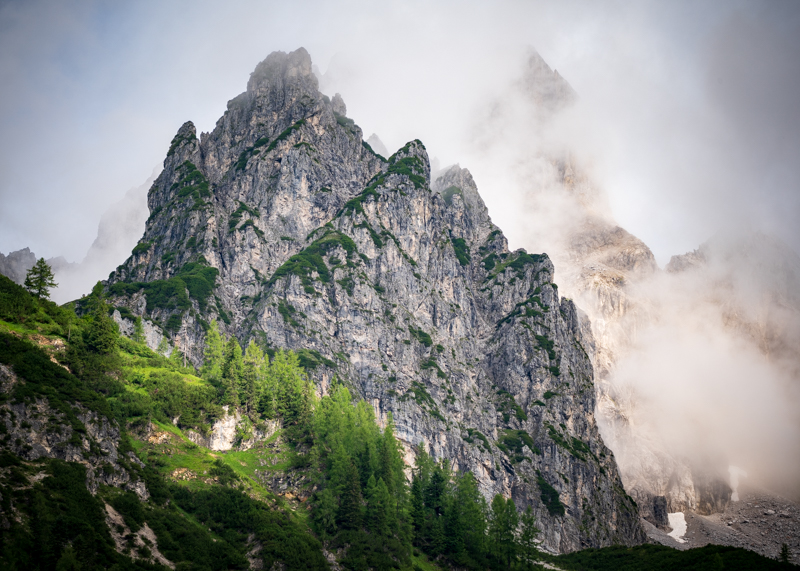
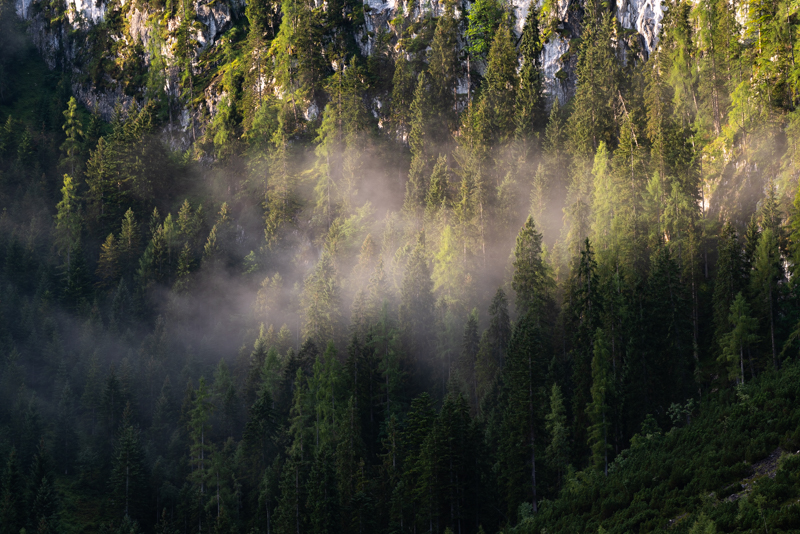
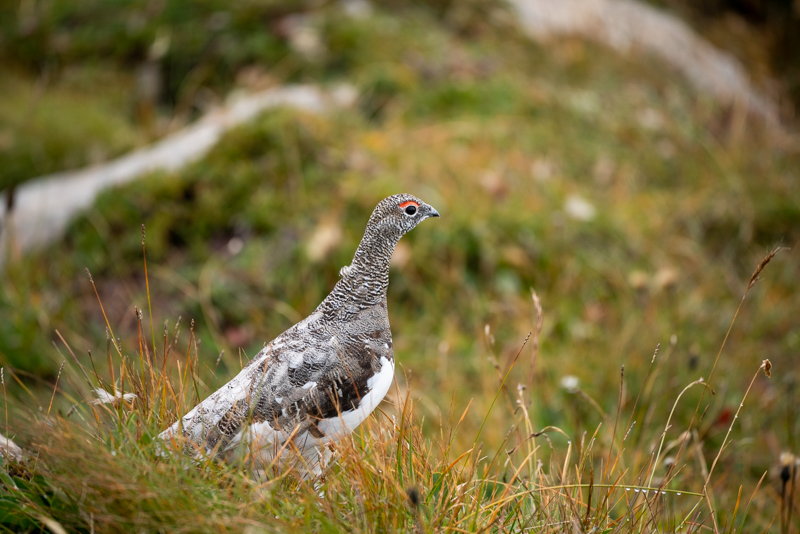
Zeiss Loxia 2/50
The Loxia is my landscape fifty for the days that my bag needs to be light. At home in the Netherlands the Lox doesn’t get much usage, however during my trips in the mountains I use it a lot.
Due to the average flare resistance of the 1.4/50 from TTArtisans it will stay for a while I guess.
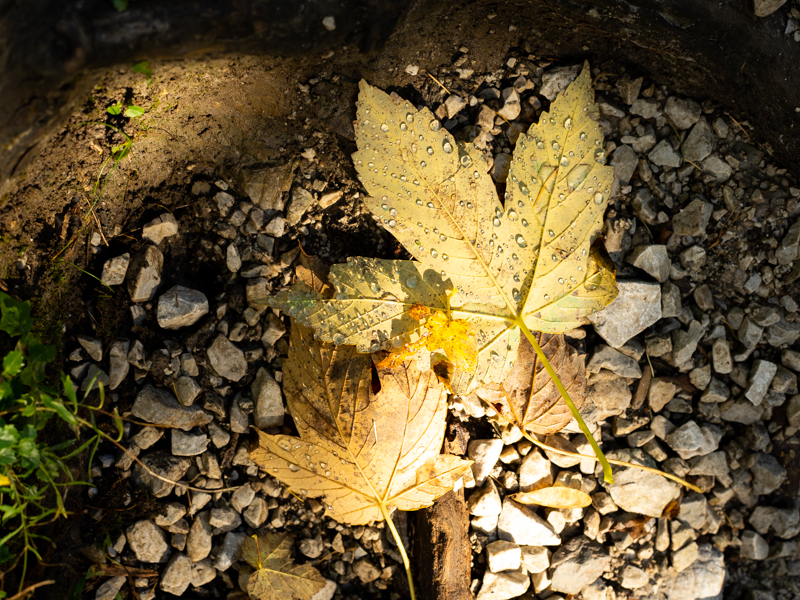
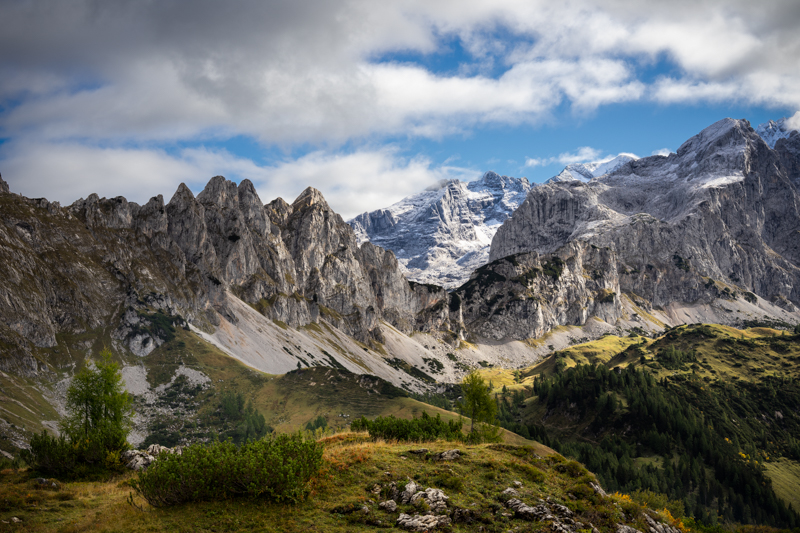
TTArtisans 1.4/50
I bought Bastian’s review sample when the review was finished, this was the only modern lens I bought in 2021.
It is a nicely made lens with very nice bokeh and sufficient sharpness. It’s part of my standard kit now and I like it a lot. Stopped down it is as sharp as my Loxia but contrast is a little bit lower. So far I’ve noticed two drawbacks; flare resistance isn’t great, and there are no electronic contacts, but for the low price one shouldn’t complain about this.
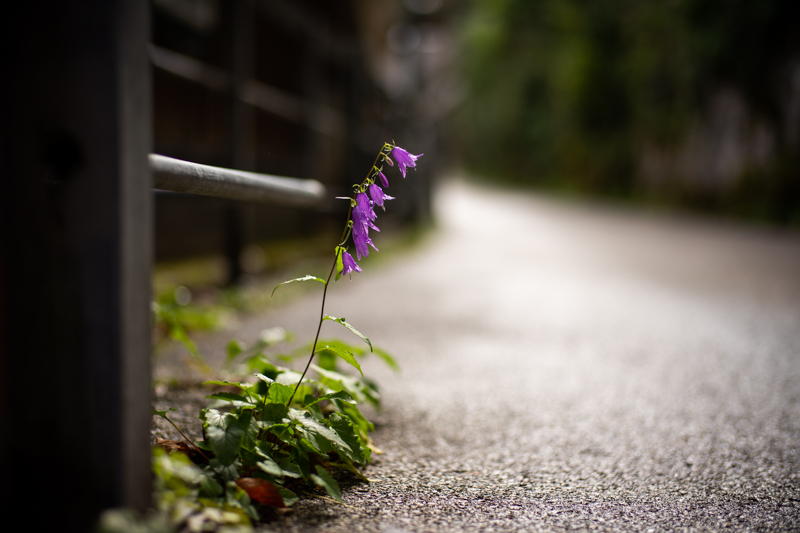


Canon nFD 3.5/135
Still my tele lens of choice when weight is important. It is sharp enough and has decent bokeh for an occasional portrait. I brought it to several very long hikes in the mountains where the 100-400 or 1.4/85 were no option.
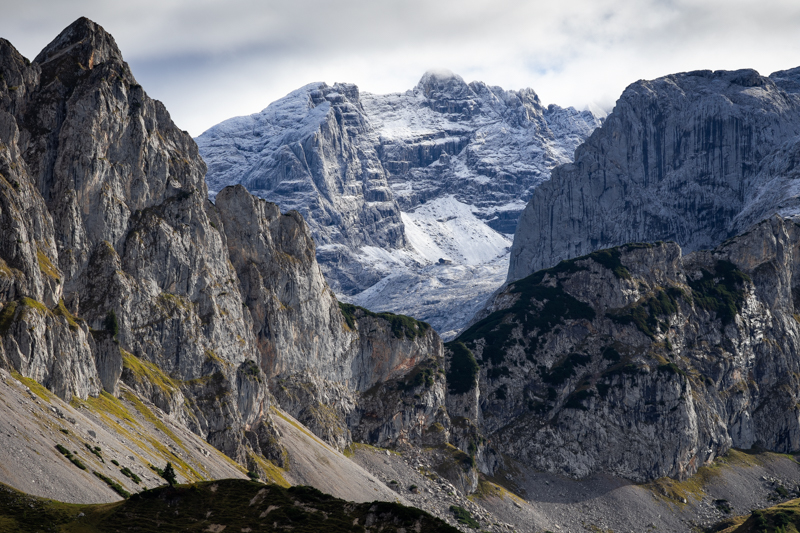
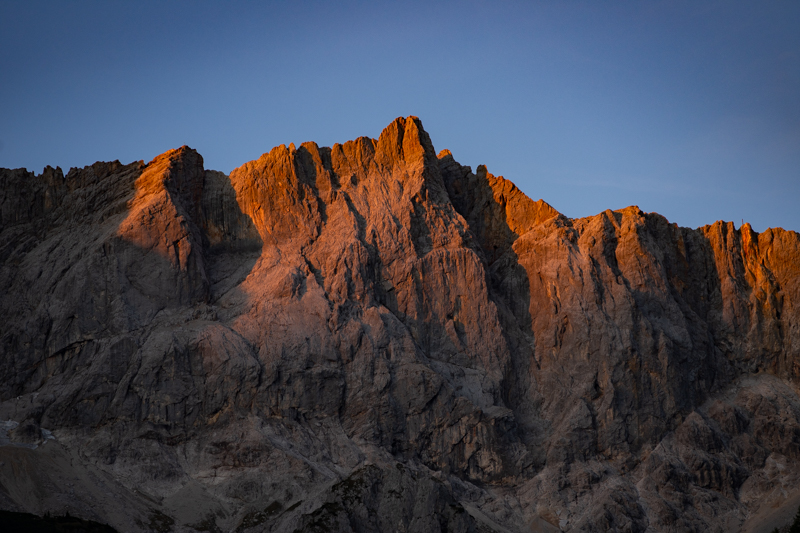
Bastian’s Kits
I have reviewed almost 20 lenses in 2021, so most of the time I had to build my kits around those lenses that “needed” to be used.
This wasn’t really a problem, as over the years I collected plenty of lenses, not only E-mount (6), but especially M-mount (13) and also a few others (2x Canon EF, 1x Nikon F, 1x C/Y). This unhealthy amount of lenses obviously allows for a wide variety of lens kits and listing those would clearly push the boundaries of this article, so instead I will list some use cases and what lenses I am usually using for those.
Travel

Laowa 9mm 5.6
Laowa 15mm 2.0
Zeiss Loxia 21mm 2.8
Voigtländer VM 35mm 1.7 + 5m PCX filter + TTArtisan M->E 6-bit adapter
Laowa 35mm 0.95
Voigtländer VM 75mm 1.5 Nokton
Sigma 180mm 5.6 Apo Macro
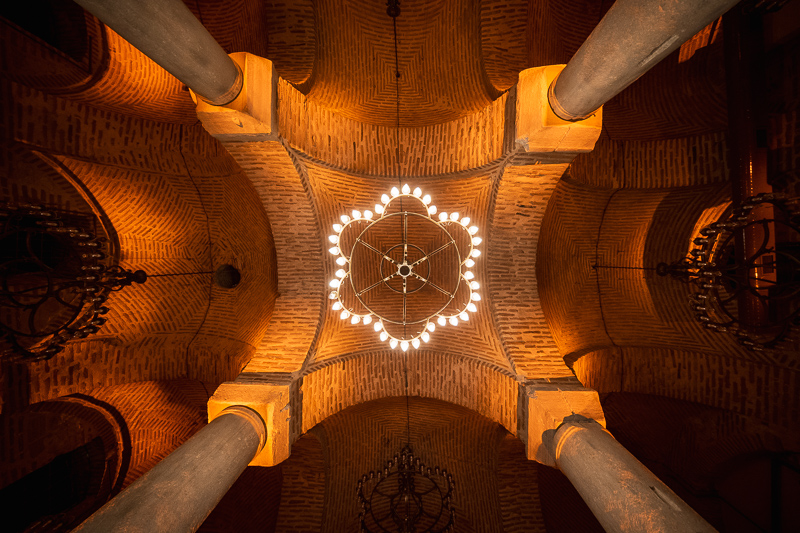
The Laowa 9mm 5.6 has become a regular in my bag, being responsible for some of my favorite pictures over the last two years.
The Zeiss Loxia 21mm 2.8 has been a regular for several years and I see no reason for that changing anytime soon.
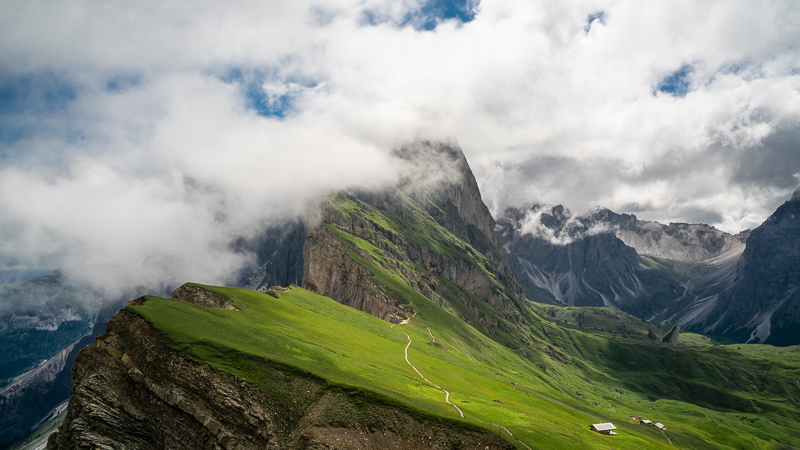
There are two 35 mm lenses here, the first being the trusted Voigtländer VM 35mm 1.7 Ultron + 5m PCX filter + TTArtisan M->E 6-bit-Adapter.
The 5m PCX filter offsets the issues caused by Sony’s thicker filter stack, the TTArtisan M-mount to E-mount adapter gives it reasonably useful exif data (this adapter will probably not be released before April ’22, so 🤫).
The Laowa 35mm 0.95 has become a strong contender though, neither small nor lightweight, but still better than lugging around the Sigma 35mm 1.2 Art DG DN, and it is even faster, allowing for some pretty cool environmental portrait pictures.

Now in the long range I used to use the Zeiss Loxia 85mm 2.4, but it is simply too heavy for what it is, so now I usually bring the Voigtländer VM 75mm 1.5 Nokton instead. Not as great on Sony as on Leica, but still better for me than the alternatives.
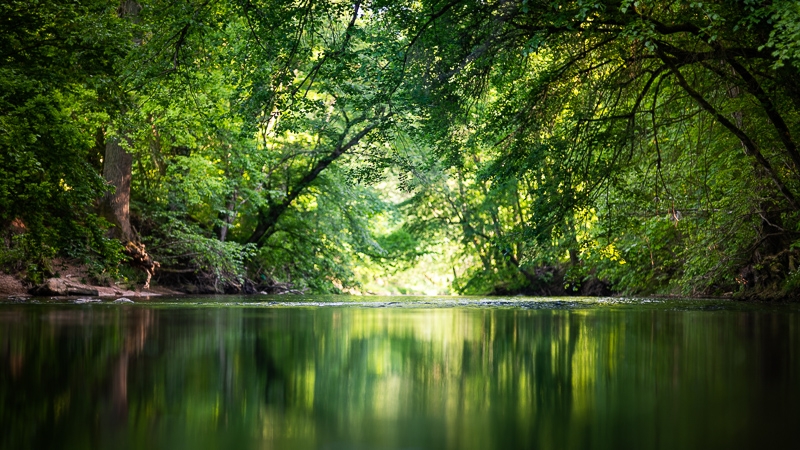
I don’t shoot much in the tele realm, so the Sigma 180mm 5.6 Apo Macro only rarely makes it in the bag and I will only bring the Laowa 15mm 2.0 when looking at doing some astrophotography.
Wedding/Reportage

Zeiss Loxia 21mm 2.8
Sigma 35mm 1.2 Art DG DN
Sony FE 85mm 1.4 GM
Canon EF 200mm 2.0 L IS USM
Nothing has changed here, still taking 98% of the pictures with Sigma 35mm 1.2 Art DG DN and Sony FE 85mm 1.4 GM on two cameras on Holdfast Moneymaker Holster.
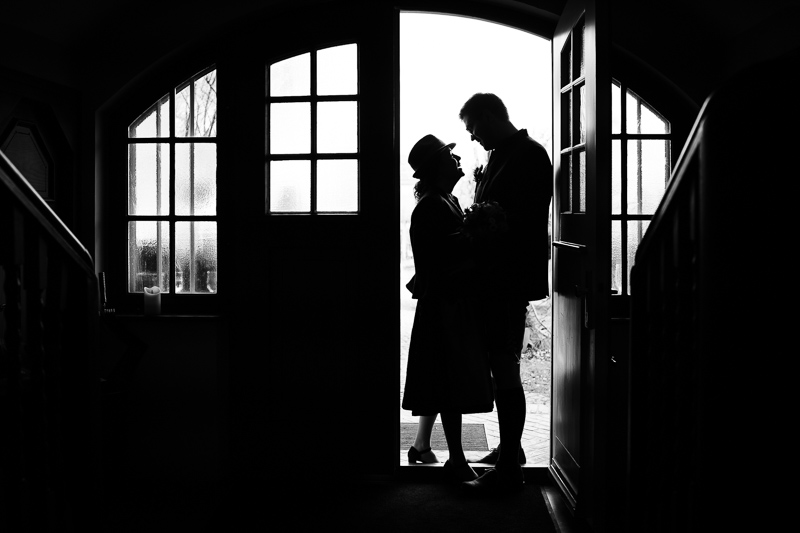
The Zeiss Loxia 21mm 2.8 is needed for the obligatory group shots and when done with what has to be done I am using the Canon EF 200mm 2.0 L IS USM for some more intimate portraits.
City Trips
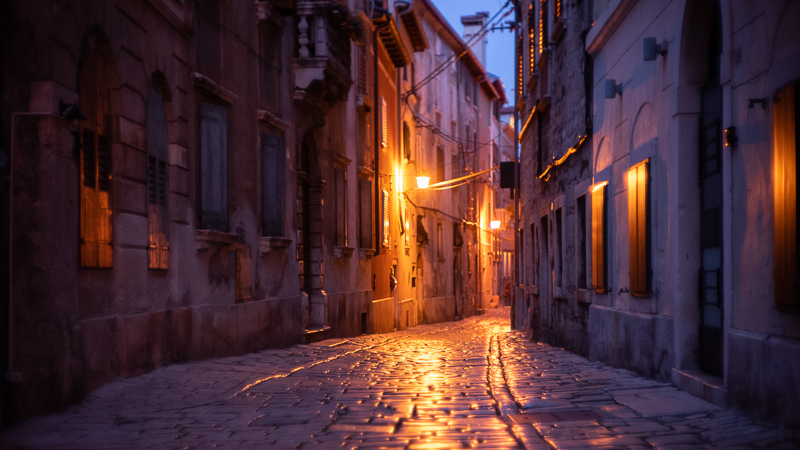
Laowa 9mm 5.6
Voigtländer VM 21mm 3.5 Color-Skopar
MS-Optics 24mm 2.0 Aporia
MS-Optics 50mm 1.0 ISM
Voigtländer VM 75mm 1.5 Nokton
Leica 90mm 2.0 Summicron-M pre-Asph
For shorter and/or non-photography-centric trips I might sometimes only bring the Leica M10 and some very small and light lenses.
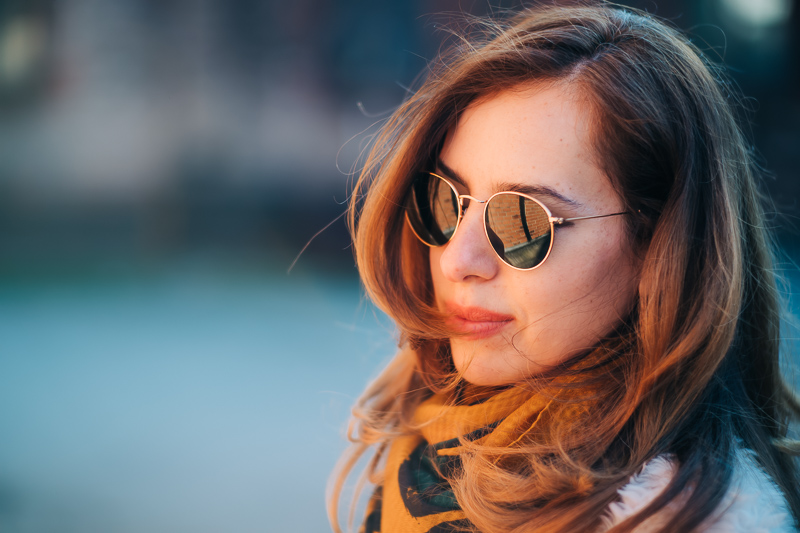
Best technical image quality is not of utmost importance here, so depending on my mood I will also bring some odd lenses like the MS-Optics 50mm 1.0 ISM or vintage lenses like the Leica 90mm 2.0 Summicron-M pre-Asph, that are fun to carry around and use or simply look cool on the camera.

What sees less use than initially expected: 7Artisans 28mm 1.4 FE+ and Voigtländer VM 35mm 1.2 E III.
I like the optical qualities of the 7Artisans 28mm 1.4, but it is a bit bigger than I like on the M10, has a minimum focus distance of 0.7 m and mediocre sunstars.
So I bought the Voigtländer 35mm 1.2 III which is smaller, lighter, has a minimum focus distance of 0.5 m and has better sunstars – so looked great on paper, but unfortunately at longer focus distances the off center sharpness at wider apertures is not as good as I would like.
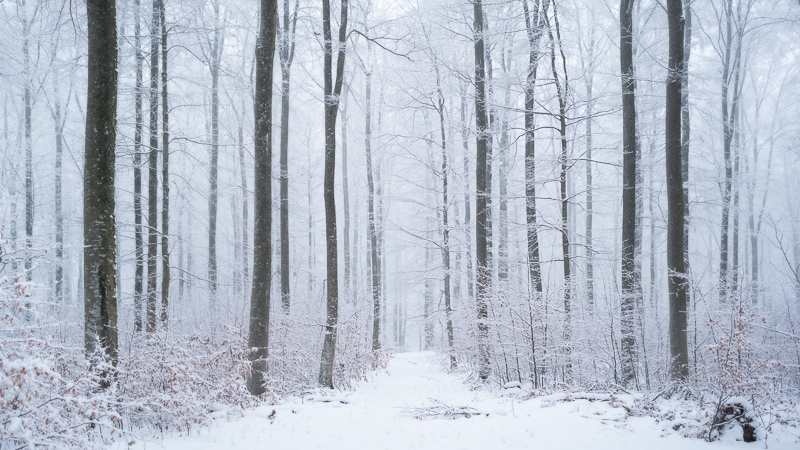
Maybe I am being to hard on it, but had I known the Laowa 35mm 0.95 was around the corner, I probably wouldn’t have bought it. Just like the Zeiss Loxia 85mm 2.4 though, it isn’t really worth to sell at a loss, so for now it stays where it is.
Janniks Kit
Some of you may have noticed that my photographic interests have shifted quite a bit during the past two years. Raising awareness for the beauty of nature and its vulnerability is a very strong motivation for me to keep on learning and also to optimize my kit. My nature photography has a strong emphasis on bird photography which makes long telephoto lenses mandatory.
My kit always consists of the following components:
- Wide angle lens
- Standard lens
- Telephoto lens
- Teleconverters
- Mono- / Tripod
Wide angle lenses:
Zeiss Loxia 2.8/21
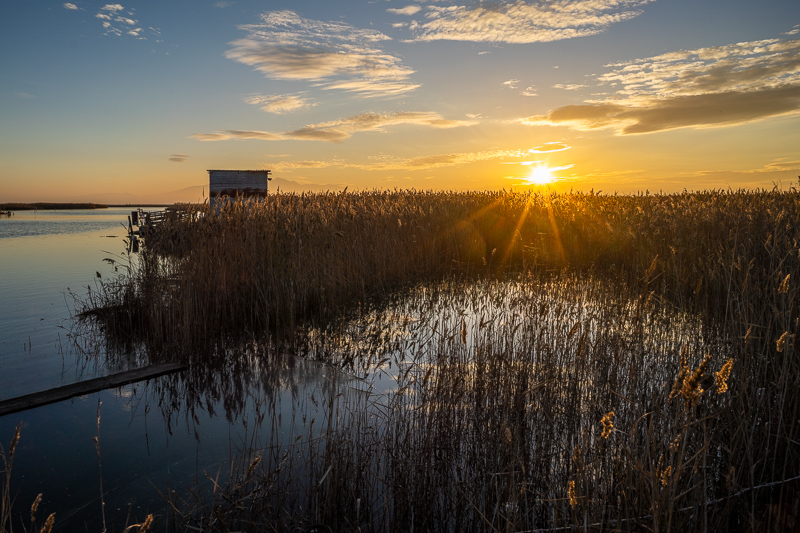
The combination of resolution, compactness and sun stars is still hard to bead why I can look over its ergonomic weaknesses. My hurting back due to heavy telephoto lenses and tripods has heated up my love for this little beauty again.
Sigma 2.8/14-24 Art DG DN
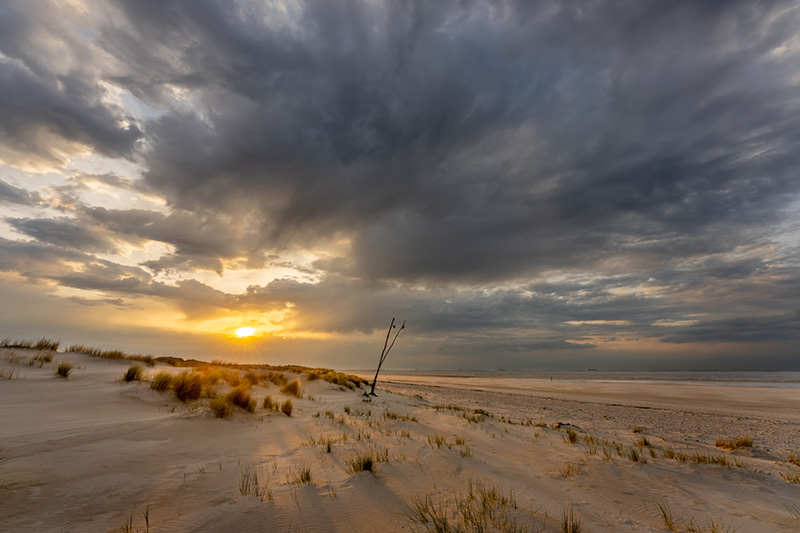
This is the real bang for the buck deal in the ultrawide lens world for Sony E-Mount. It’s optically brilliant and also very versatile why I choose this option when landscape photography is a central aspect of my plans.
Standard lenses:
Voigtländer APO-Lanthar 2/50
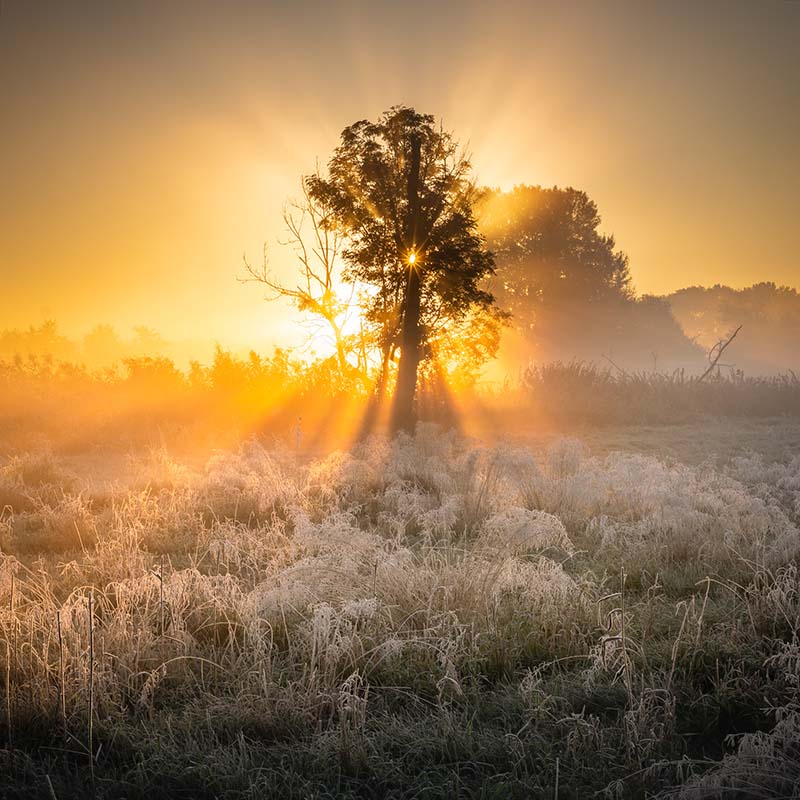
This lens is all I can ask for in this focal range. The sharpness is still mindblowing and the compactness comes in handy as I rarely go out with the intention to shoot primarily with 50mm. As I don’t do many portraits, the lack of AF and a very large aperture doensn’t bother me.
Samyang 1.8/45
I use this lens once or twice in a year when I go out with my kid and want to take some occasional family images
Short telephoto lenses:
Sony FE 1.8/85
Although being optically better than the Samyang 1.8/45 the same use case applies for this lens too.
Sony FE 2.8/90 G OSS
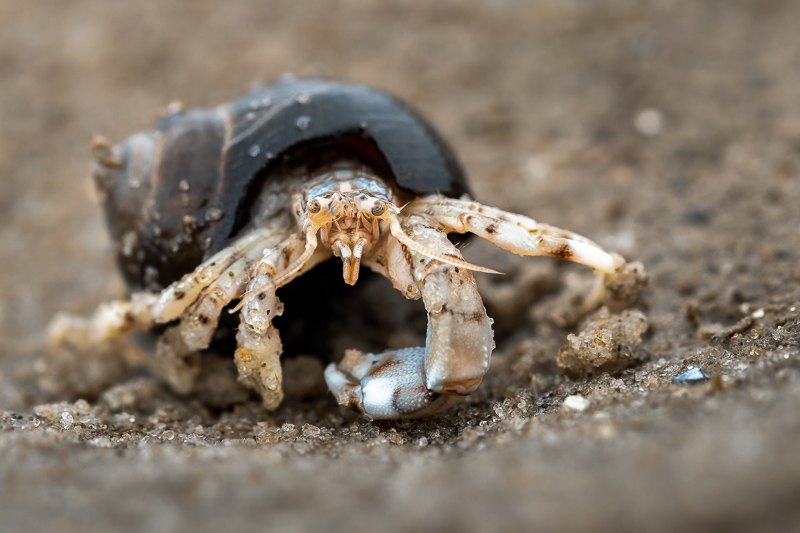
I had the luck to get a perfectly centered sample of this lens in 2021. Whenever I use this lens, I think that the well designed MF clutch should be integrated to other Sony lenses as well. This is my first choice in this focal range as it opens unique close up options while still not lacking too much in other categories like AF and infinity sharpness.
Sony FE 1.8/135 GM OSS
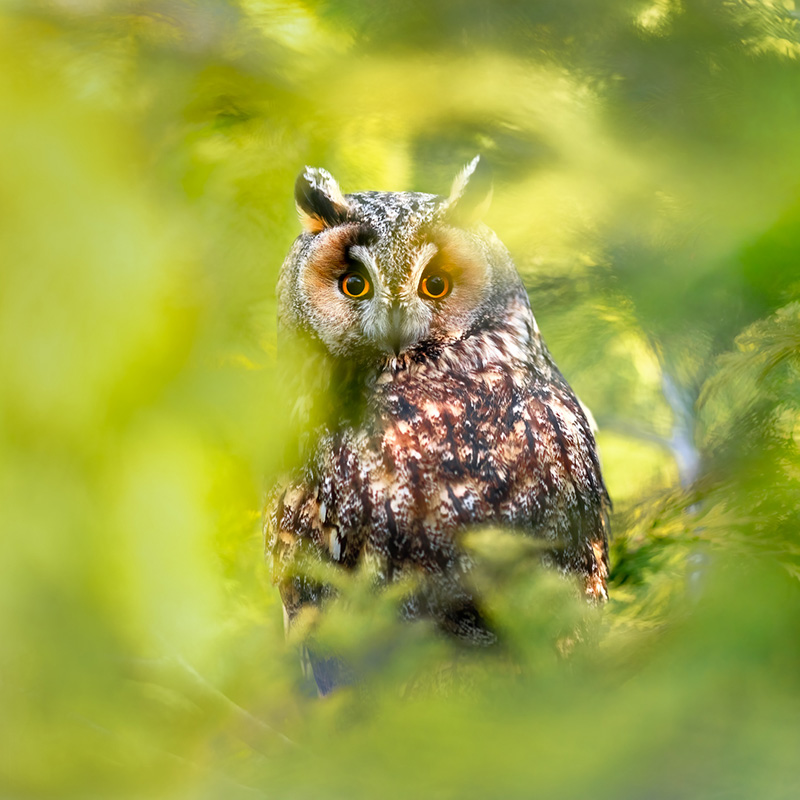
This is still a lens that has it all for me – brilliant bokeh, excellent sharpness, short MFD and very fast autofocus. I still dislike that Sony has failed to make this lens compatible with the teleconverters.
Long telephoto lenses:
Sony 4.5-5.6/100-400 GM OSS
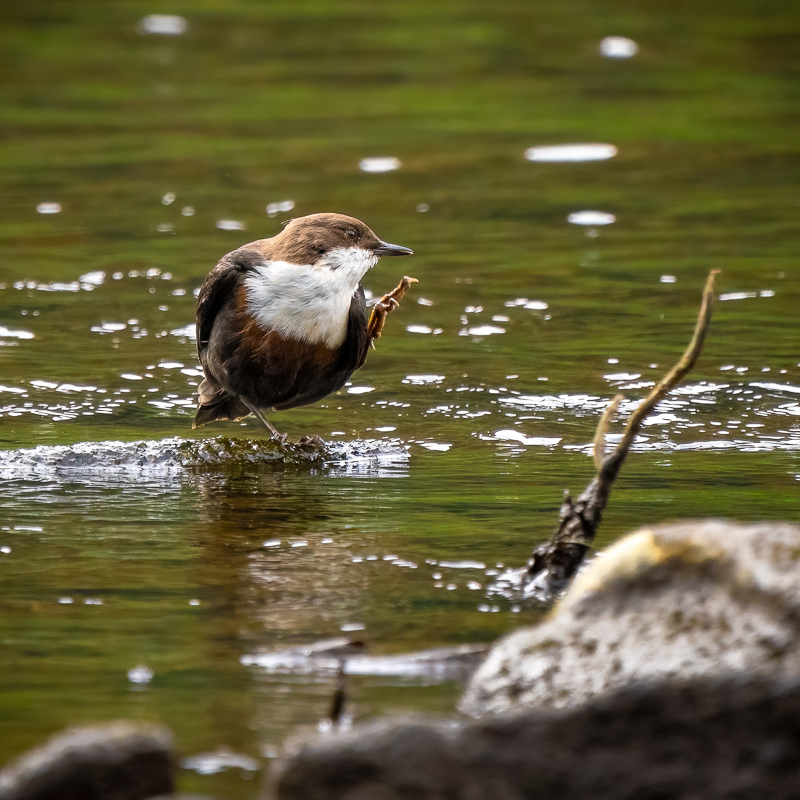
The 100-400mm works for me as a swiss knife when I need compactness without giving up too much compared to my standard kit. It replaces the short telephoto, macro and the long telephoto lens while being compatible with the teleconverters. As a secondary lens for me, its collapsible design is a positive aspect for me as it keeps my kit size small.
Sony 2.8/400 GM OSS
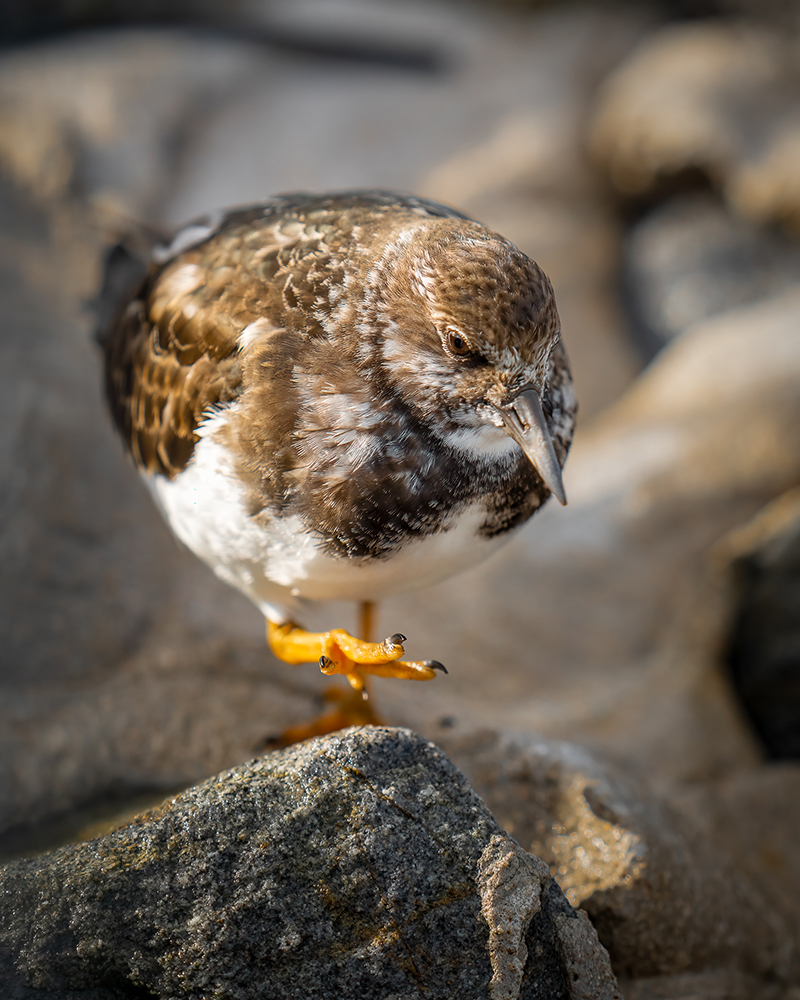
This is the biggest investment into photography gear that I have ever made. Versatility for low light and low distance subjects and availability (used) let me choose this lens over a 4/600. Even after thousands of images, I am still optimizing my skills with this lens. After this period, I know that spending 10 grands on a lens can’t make up for lacking technique. The size still feels enormous although my muscle memory is starting to involve this beast. Owning this lens finally made a tripod user out of me.
Sony 1.4x / 2x teleconverters
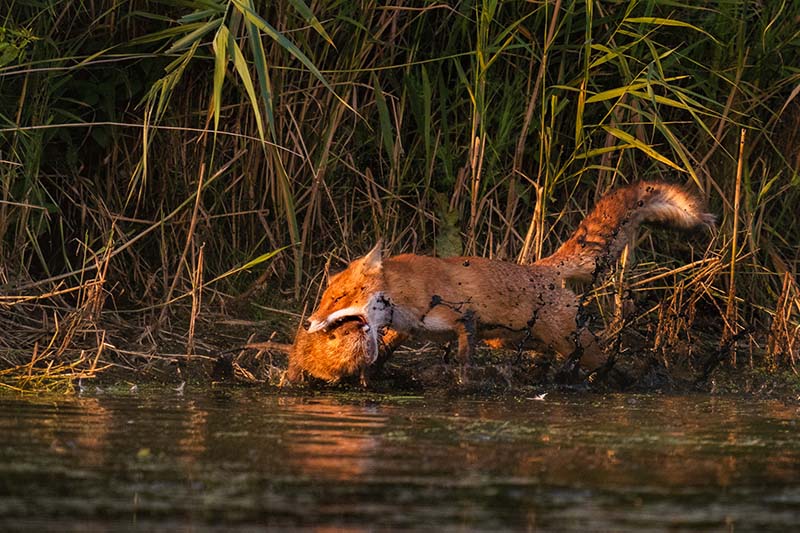
Owning both teleconverters is a good idea for bird photographers with a 400mm lens. Luckily, the optical quality of the teleconverters is remarkable which makes the use of them beneficial over plain cropping.
Final Words
As you see some lenses like the Loxia 2.8/21, GM 1.4/24, TTArtisans 1.4/50, Sigma Art 1.4/85 DG DN or GM 4.5-5.6/100-400 can be found in more than one of our bags but different interests and situations in life lead to very different kits.
So, how does your kit look like?
The Team
Latest posts by The Team (see all)
- November / Black Friday Deals 2025 - November 19, 2025
- Sony FE Lenses: The honest Guide for the A7/A9/A1 Series - March 18, 2025
- Guide to best Sony E-Mount 35mm Lenses for A7/A9/A1 series - March 8, 2025
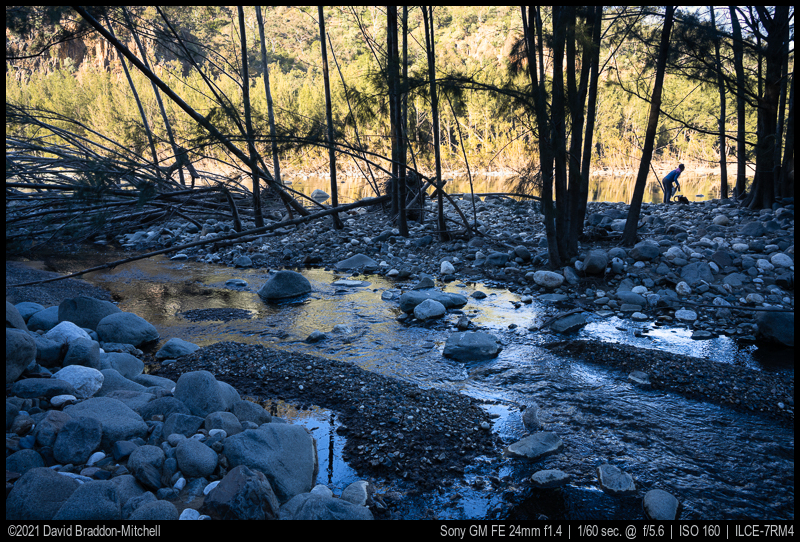

Is David (or Phillip in the case of the latter) planning on reviewing the Sigma 90/2.8 and/or the 100-400 DN? Just curious, I keep waffling between it, the GM, and the Tamron 150-500… I’d love to see an even lighter 132/2.8 G too btw but in the meantime I’m glad to have picked up the Canon FD 135/3.5 based off Juriaan’s review!
I’m really happy with my main 20G / 35GM / SY75 trio, but I’m also glad to have some smaller alternatives in the 24G & SY45 despite their compromises compared to my main trio. I’ve been eyeing the Laowa 11/4.5 in large part due to Bastian’s review, I was pretty impressed with their 100/2.8 APO macro and their 7.5/2 for M4/3.
We both have struggled to find time for reviews in 2021 and I am not too optimistic that will change in 2022. So that review might happen or it might not. Since becoming a father I find it even more difficult to find the time for reviews. And the longer I don’t write a review, the longer it takes to write one ;).
This reads like a FM gear confession thread, and I appreciate that! I’ve been trying to change/slim down a bit since picking up the A7R4 with it’s cropping abilities. 2022 might be a really interesting year when it comes to that.
I recently picked up the Batis 40 and that’s been fantastic for me, even pushed aside my CV40 for a bit.
Beautiful photos, I especially like your photos of mountains and forests, my kit is only a Sony FE 28 – 70 mm F3.5-5.6 OSS lens, I mostly photograph forest landscapes, sometimes I photograph food and various objects, sometimes I put on the lens I have macro lens and then I have a pseudo macro lens. I have a Sony A7 version 1 camera without stabilization and the mentioned lens, I have been photographing with this set for 3 years
You certainly can get great results with that setup and enjoy the process. That’s one beauty of photography: Experience, talent and dedication count a whole lot more for good photographs than expensive gear.
So many nice lenses listed here, makes you want to try them all 🙂
However, for the 20/21mm focal length there is a much better alternative available than the Loxia 21mm in my honest opinion. I know you guys love this lens, but I think it´s time to reconsider and dethrone this lens now. I own the Loxia 21, the Nikon 20mm f1.8 and recently bought the Sony 20mm f1.8 G. The Sony is vastly better than the other two lenses, especially when deployed on a high resolution camera like the A7R IV and especially when looking at the corners.
On the A7R IV the Loxia becomes a more mediocre lens clearly showing its age, looks like field curvature is a large part of the problem.
The Nikon isn´t much better and is also showing more CA than the Loxia. My humble Sigma 24mm f3.5 has more even sharpness across the field than both the Loxia and the Nikon and noticeably better corners for landscape use (possibly the Loxia is sharper in the centre). It will be very interesting to see what the rumored Sigma 20mm f2.0 will be like.
The recently released Sigma 24mm f2.0 is suppose to be slightly better than the f3.5 version, I haven´t tested this lens myself, but if the new 20mm performs at about the same level as either of the 24mm versions this should be a very interesting lens and possibly a good alternative to the Sony 20mm f1.8G.
The Sony 20mm is larger than the Loxia, but pretty much the same weight. The Loxia has excellent manual focus of course, but very bad ergonomics when attaching or removing it from the camera body and definitely needs a certain fix available and mentioned at this site. A new Loxia is not worth the inflated price in my opinion.
The Sony seems better built than the Nikon and not as “plasticky” and the manual focus is also much better implemented with no sloppiness like the Nikon is prone to. For me the Sony 20mm f1.8 G is definitely a keeper, the Loxia 21 and the Nikon 20mm will have to go.
The Sigma 90mm f2.8 also made it onto the list, I bought and returned this lens a few months back. It´s not a total disaster, but for less money you can get a much better lens in the Voigtlander APO-Lanthar 90mm f/3.5 SL or SL II if you can find one on the secondhand market. Even if it´s APO designation doesn´t give quite the performance of the VL 110mm APO or the VL50mm APO it is still a very nice lens, when comparing it directly to the Sigma 90mm this becomes very clear! The VL also has a noticeable larger magnification ratio, even if the MFD is the same as the Sigma – 50cm. The SL II version also comes bundled with a dedicated close up lens and can double as a macro lens. Even without it is great for close ups, and a lot of the time I leave the VL 110mmm at home and just use the VL 90mm with an Nikon F to Sony E adapter as this often gets me close enough to the subject in a smaller and lighter package. A third iteration of the VL 90mm has been released recently, this is even smaller and lighter than the older types and slightly faster, but has a MFD of only 90cm. Possibly an E-mount version is on the horizon? It has already been released in Nikon F-mount and also M-mount. I haven´t studied this new version very closely, so not sure exactly how much it shares with the older versions in terms of optical design, but it seems typical for Cosina to recycle the optical designs of the lenses in the SL-series with just minor tweaks – the real changes are more in the appearance which is now very close to Nikkor lenses of the 60´s and early 70´s (in other words; beautiful lenses).
The only real weakness of my VL 90mm SL is flare resistance which is not impressive – possibly/hopefully better in the two newer versions.
The Sigma 90mm is probably great if you do video and need/want AF, it has just a very small amount of focus breathing while the VL 90mm will have a lot of this as it is not an internal focus design (but this also results in the better magnification ratio).
The Sony 14mm f1.8 is also a well deserved listing, this lens is a true gem – so fast and so small! (I only wish it had a slightly shorter MFD, like the old Nikon 14mm f2.8 AF). Together with the Sony 20mm f1.8 G this has been my favorite super wide angle lens recently.
At least in this well done comparison the Loxia actually has better corners than the Sony (at wider apertures): https://www.fredmiranda.com/forum/topic/1639619/0. Oh and it loses to the Sigma 2.8/14-24 in this extreme pixel peeping contest.
We certainly wouldn’t recommend to buy the Loxia 2.8/21 new at $1500 but neither is there a good reason to change it for a Sony when the focus is on landscape.
Thanks for that – interesting test.
It could be down to copy variation; possibly I have a poor copy of the Loxia 21 and have been lucky when buying the Sony 20mm. Thankfully, I did not buy the Loxia new at full price at least.
I tested a friends copy of the Sony 20mm against my Loxia 21 and there was absolutely no doubt the Loxia was not performing at the same level, and this was confirmed after I got my own copy of the Sony 20mm. To get across the frame sharpness on A7R IV for distant subjects using my copy of the Loxia I have to stop down to f5.6 or f8 and set my focus in the corner or extreme edges of the frame.
If my copy was performing as the one in the test you linked to I would be very happy 🙂
I have seen others complain about what they believe is curvature of field of the Loxia 21 too, so maybe there are some poor copies around (which is a bit shocking considering the price of this lens).
When I used the Loxia on my A7R II I never really noticed any weak corners, but maybe I have to revisit some old shots and check closer….
It is a shame – I really like the compact size and the smooth MF of the Loxia.
Maybe it’s copy variation, but I’ve never been thrilled with either of the Apo Lanthar 90mm f3.5s I’ve tried. Amazing for its day, certainly, but not up the best modern glass. I prefer the Sigma (the Loxia 85 might be a touch better still). If you search FM Fred has some good work on the AL SL 90. So either you have an unusually great AL 90, or an unusually bad Sigma.
So have you tested the SLR-version of the VL 90mm or the small RF-version? These are two completely different lenses and the SLR-version is the better performer.
I probably do have a good copy of the VL 90mm f3.5 as it performs quite well compared to other glass I own in the 85mm to 110mm focal range.
If the Sigma was a poor copy or not is impossible to say since I have only tested the one, but it did not perform well compared to my VL 90mm. It could very well be a copy performing below average for all I know.
For now I´m quite happy sticking to my VL 90mm, if I get the chance to test before I buy I may take another look at the Sigma at a later stage. I was excited about the Sigma when I first saw the specs and it got some good reviews too, so was very disappointed after testing my copy.
Yep, I never tried the M version.
Wow thanks for the overview! I enjoyed reading it.
Phillip, since you use the 40mm 1.2 and reviewed the 35mm SE 1.2, do you think the 35mm is less sharp wide open and has more CA issues? Whenever I look at image samples I seem to feel like thats the case. I’m going to buy either one or the other shortly but cannot decide
Nice to see some i series lenses mentioned. My favorite lens this year I picked up is the Sigma 45mm 2.8. I also bought the 50mm 2.5 G but only recently. With that said, I have to hand it to the Sigma for it’s overall rendering.
I love those kit reviews:)
For me the discovery of the year was the tamron 28-200. It completly changed the infamous ultrazooms world. Versality of this lens is enormous. Usually I pair it with the CV21/3.5.
For family shots and walking I use FE35/1.8 and batis 85/1.8.
And the STF is a really special lens, I can always recognize my photos made with it:)
I still keep FE70-300G, it has a great balance of weight/size/performance when I need more than 200mm:)
loved reading your thoughts on the lens kits especially because your needs are very different, so it reflects alot different use cases.
when reflecting lens kits people sometimes forget that there is also joy in just using a beautifully constructed lens or one with special characteristics (very cheap, very small, very nice bokeh, etc), so i have a hard time getting rid of my manual primes that i rarely use.
i checked my favourite photos of the year and i mostly used (in order amount of images)
FE24-105f4G
Ricoh GRii
FE1.8/35
FE1.8/85
“TTArtisan M->E 6-bit adapter” 😎 That sounds intriguing.
My kit is still the Zeiss Biogon 25/2.8 ZM, Planar 50/2 ZM, the Voigtländer 15/4.5 and the Minolta MD 100/2.4 + the RX1R. Size and rendering are my no. 1 priorities.
This year, I was also fiddling around with the Voigtländer Ultron 28/2 due to Bastian’s review – and it’s complicated: technically it’s not good, lots of aberrations … but there is some magic in the images that keeps me coming back again and again.
I might also get the opportunity to have a closer look at the Ultron 2/28 MK II soon.
Thanks for the update. I enjoyed seeing how your kits have changed as your circumstances have changed.
Although I became interested in photography via electron microscopy, I never really got into macro work. However, I have kept an adapted macro lens around to facilitate copying my old 6×7 and 135 transparencies. That lens has found new favor now that the older photographers in the family have passed. My father and my father-in-law both left behind extensive collections of old black and white prints, so I’ve immersed myself in copy work to share those with the rest of my family. I’m enjoying the process, which will keep me busy until my circumstances change and I can travel again.
Thank you for your intersting article about your kits for 2022! So different as people are as different are the kits developing and changing with live circumstances and photo tasks. May you still continue to enjoy photography in 2022!
Excellent review! I love this type of articles, gives a sense of what’s most useful for different applications, and clearly not always the most expensive lens is the best.
One typo, i think, the sigma lens 100-400 is 5-6.3 not 5-6.4.
Interesting article, well worth the read.
My favourite landscape lens is probably the 90G. I didn’t discover any decentering/tilt via your test (that I use for all new lenses, thanks), it is however not razor sharp anywhere wide open at infinity…there’s just a tiny hint of softness/bloom that to me makes some landscape shots rather appealing as opposed to shooting the same scene at f/5,6.The MF is very well implemented too and I like the clutch.
I really like the CV 21/3,5 too for its wide view and sunstars.(And no one non-photog who saw a shot from it mentioned a “mid-zone drop” 🙂 )
Phillip,
Congratulations on the birth of your child, it will be interesting to see your lens choices in the next few years as they become mobile. The last few years with twins, fast AF has been king in my book and I’d give up everything else just to get the shot. My kids are turning 5 next month and are finally just starting to get the point to give Daddy a second or 2 of posing time and I am integrating oldies such as my Minolta 58mm 1.2 and getting a lot of great shots
Thanks Matt 🙂
I plan on getting a Sony a7IV soon, and worry about AF lenses after that but good to know that there will come a point where manual focus works again. I am pretty sure that even with great AF I will prefer to focus manually where movement of the subject allows for it.
Hi everybody!,
longterm reader, first time posting here 🙂 I really like your edit guys, particularly woodland/landscape photos (Phillip’s photos with Sigma 35f2 are fantastic examples). Do you plan to write some article about it? It would be great!
Have a nice day!
It’s baby first at the moment but I still have the Sigma and might get to that review in the spring 🙂
Hello guys,
Always so interesting to read your reviews and knowledge about gear or lenses you used on a daily basis.
You’ve got everyone several lenses. My main concern is about to develop the picture and remember which lens I use for it. How do you distinguish each photo and the lens used at that time?
I mean on a city trip you can have 3 lenses, 1 memory card. Taking too much pictures with the three lenses…
Many thanks
I try to limit the amount of lenses without Exif data to 1 or 2 per trip, so it the end I have to distinguish only between let’s say a 21mm and a 75mm which isn’t that difficult.
Another option with digital is to take a quick picture of your hand with a given number of fingers visible, so you know the pictures you took after showing a 3 are taken with the 35mm lens, when you show a 2 it is a 20mm and so on.
I sometimes did this when doing comparisons of very similar lenses.
Thank you for your answer.
Nice trick with the fingers. I will try this one. I wish you good luck with your 90mm to use it ;-).
I tried with several memory cards, each dedicated to a lens but it takes a little time and can be expensive.
You can still assign five fingers to your longest lens 😉
Hi, I recently bought a used Loxia 21mm f2.8 lens on eBay. The lens was advertised as “mint”. It is really in a good shape but the focus ring is very stiff. The seller claimed that he tried another, demo, lens and that lens’ focus ring was also stiff so it did not bother him. I don’t know if I should send the lens back; is it true that in general the focus ring is stiff on these lenses?
Can get stiffer over time (happened to mine) or looser (had a demo 35mm 2.0 Loxia that had a focus ring with almost no resistance).
So not a reason to send the lens back imho.
Really enjoyed reading that. And I’m really enjoying the content on your website.
I’ve just switched to an A7IV from a Canon 5D MkIV, 16-35, 24-70, 70-200 and 35mm f1.4 in order to do smaller and lighter.
I have the Loxia 50, Zeiss 55 and the Sony 85 1.8 and am trying to decide what to add to my kit. The Sony 35mm 1.4 GM would be a dream but I switched to go smaller and am not sure if it’s too much for an everyday lens. The Sigma 35 1.2 and Sony 40mm G are attractive also. But your love for the Voigtlander 1.2’s is tempting me!
Anyway, thanks for all the great information.
Dave
Well a ki with no 35 is a pity. I personally find the GM35 surprisingly manageable in terms of size and weight, and I normally obsess about that.
The Sigma 1.2 is a special purpose behemoth.
You might consider the Sigma i35. The manual focus throw is a bit fast for some tastes, but others don’t mind. It’s incredibly sharp at most distances, even wide open, the AF is decent if not quite GM like.
The main complaint people have is that at around MFD its a bit less sharp. That’s true, but only really in comparison to the incredible sharpness at longer distances. And you can always (and probably usually should for DOF) stop down near MFD.
I thin it would fit into your system nicely, a similar size to your fifties. If you like MF the CV APO Lanthar 35 is gorgeous. Bastian was a bit disappointed, but I think that was due to high expectations. It is certainly the technically best MF 35mm lens (though some prefer a wider aperture).
The Sony G 40 is nice piece of kit I use a lot, but given you already have a 50 and a 55, would it really add much?
Thanks David, I appreciate the comments.
I did mean to say ‘f2’ for the Sigma 35mm. No way I would lug the 1.2 around!
How much do you think you would miss the f/1.4 of the GM if you only had the f/2 of the Sigma 35? It does look as though the sigma renders nicely but not quite as smooth as the GM.
I don’t tend to use the Loxia 50 that much as I do miss AF when my kids are around. And sometimes I find the 55 very sharp but a bit boring if that makes sense. The 40mm G I guess would be to add a very compact single lens setup for city walkabouts.
Part of the decision is also whether I stick with primes or add the Sigma 24-70 and an ultrawide zoom at some point. At the moment I’m really enjoying having a small bag with only a couple of light lenses. It’s a bit of a change from the three zooms! Although i need to figure out how to adapt my Lee filter holder to some of my lenses as I like using the Big Stopper ND filters.
All the best
Dave
How much would I miss the f 1.4 of the GM?
Well of course not that much. We all made great images with f2 35mm lenses back in the days of film that were overwhelmingly shittier than the Sigma 35!
The f 1.4 is fun to have, the GM is a bit smoother and sharper at f2 than the Sigma. By f2.8 I wouldn’t care a damn if I had the Sigma or the GM, except possibly just a little bit near MFD. The GM has much better tracking AF if that matters to you, it doesn’t to me.
So should one spring for the GM? Only if you can do so with no real financial pain. If it’s any kind of stretch, I’d get the Sigma. I wouldn’t miss out on a holiday for it.
Thanks for the information and continued reviews. I bought a lot of my kit after seeing reviews here.
My kit:
7Artisans f/1.2 28mm
Voigtlander f/1.2 50mm
Laowa f/2 110mm 2x macro
I love my 50 very much, and it is by far my most used lens.
I feel the Laowa macro is too bulky and will buy a compact 100mm-ish macro (even if it is small aperture: f/5.6 would be fine). Although my 28 is quite nice for the price, I hope to get a Sony GM 24mm one day to replace it. I rarely use my 15mm Laowa f/2 but it is nice to have for occasional ulta-wide shots.
Maybe the Laowa 85mm 5.6 would be an alternative?
Smallest macro in the ~85-100mm range there is.
@ish:
This ist funny, I used to have the 7Artisan 28 f1.4 (with close focus Adapter) and the GM 24 f1.4 over 8 month and used both a lot. But the 28 was used more and so I sold the GM 24 two weeks ago I prefer 28mm just over 24mm
Thank you for a great site. The reviews are very helpful and fun to read.
For those in the team who use 100-400mm lenses, do you prefer the Sigma DG DN OS or the Sony GM?
While not being asked by you directly I can share some of my personal experiences and thoughts on your question.
The Sigma 100-400 DG DN OS Contemporary is a very capable lens which I used in the past and still regret having sold to fund the Sigma 150-600 DG DN OS Sports. The 150-600mm performed so underwhelmingly (especially compared to the 100-400) that I sold it too and am now looking for an alternative.
The GM 100-400 performs on a very high level. The advantage of the Sony 100-400 GM and 200-600 G tele zooms as well as the 400mm and 600mm tele primes is the possibility to use them with Sony‘s teleconverters.
The 150-600 DG DN stopped working as neither aperture control nor focussing (not even MF as it is a focus-by-wire design) were working after being attached to a Sony TC. The camera then even behaved as if there was no lens attached at all.
Thus, if you plan to use Sony‘s TCs get any of the Sony lenses which fits your needs best. If you want to spend less money get the Sigma 100-400 or consider the brand new Tamron 50-400. The price/performance ratio of the Sigma is hard to beat as AF is very fast (for a third party lens) and reliable and it’s very sharp. I have no personal experience with the Tamron yet.
There are also a few differences between the Sony branded zooms to consider. The 100-400 is a GM lens while the 200-600 is „only“ a G lens (and a bit cheaper). But the latter performs on such a high level that the image quality should not be the only deciding factor. The 200-600 has of course the longer reach while the 100-400 has a much lower MFD. The 100-400 will focus faster, but the 200-600 isn‘t really slow either. The 100-400 will extend as you zoom while the 200-600 is internal zooming and thus may be better protected against humidity and definitely is better protected against dust as it won‘t suck in any air while zooming (fast).
If you want a light tele zoom with some macro-like capabilities, get the new Tamron (up to 1:2 at 50mm), the GM 100-400 (up to 1:2.8), or the Sigma 100-400 (up to 1:4.1).
If you need more reach get a longer tele zoom/prime or use the GM 100-400 with a TC. As the TC doesn‘t affect the MFD — measured from the front element of the lens as the system get‘s longer when attaching a TC — you might then be able to get to a magnification of up to roughly 1:1.4 with the 2x TC.
If you want to use TCs get one of the Sony lenses or adapt a DSLR lens which can be used with DSLR TCs. But the latter will weigh you down as you won‘t be able to find a combination below at least 2kg.
Hi Olafl,
Thank you!
I realized that my question was rather vague but your reply has been very detailed, quite helpful and much appreciated 🙂
To better understand why I am thinking of getting a 100-400mm lens let me outline my current kit.
I currently have a 24mm GM, the 85mm Sigma DG DN Art and the first edition Tamron 28-75mm standard zoom.
The Tamron is capable and has taken many fine photos but I rarely use it mainly because of the poor contrast compared to the other two (yes apples to oranges, but still) as well as the bokeh. So for the 100-400mm I would look for better contrast and sharpness (and bokeh?).
The 24mm GM is a wonderful lens which I use when out and about and I have taken several great photos with it. I like the contrast and separation of the subject from the background as well as the wonderful bokeh.
The Sigma 85mm is the one I have used most recently. I am hard pressed to select between this and the 24mm as I enjoy them both but I feel the 24mm has “something” that the 85mm lacks, perhaps the bokeh or micro-contrast?
I use my kit for many things – family photos, street photography, landscapes etc. If it can’t run away fast enough I will probably take a photo of it.
The 100-400mm would be used for, well, everything. Given the great reviews of the Sigma I am trying to decide if I want to spend three times more on the Sony. I am not interested in TCs right now but if I get the Sony I will likely get them.
Thank you again for your detailed description. The 100-400mm is supposed to help get more interesting portraits on holidays, shoot eye-catching distant landscape and occasionally wild-life. Also perhaps the moon? (though 400mm is a bit short). I have not dipped into macro photography yet though I have taken a few close up shots of various animate and inanimate objects. The 100-400mm would probably see occasional use after the 24mm and 85mm.
Do you think the Sigma or Sony would fit better?
You said you regret selling your Sigma 100-400mm. Do you personally prefer the Sigma DG DN or the Sony GM lens?
Again, I appreciate you taking the time for such a detailed response.
Hello Saabry,
I bundled some images taken with the Sigma 100-400 DG DN OS Contemporary for you in an album on flikr: https://www.flickr.com/photos/196346555@N04/albums/72177720301608278
Unfortunately (for reasons now unknown — maybe I tried something and forgot to set the aperture back to useful values) I shot the photos of the sunset at F22 which led to some diffraction-induced softness.
In the rest of the photos you may get an idea of the bokeh rendering and sharpness of that lens. For photos taken with the GM 100-400 please refer to Juriaan’s review: https://phillipreeve.net/blog/sony-gm-100-400-f-4-5-5-6/
If you just plan to shoot tele occasionally get the Sigma. You won’t be disappointed and it won’t cost you a fortune. Just make sure to get the tripod collar, too. Although the lens is not that heavy the handling will improve a lot. Unfortunately the lens ships without the collar. You’ll get some 90% of the GM’s qualities for roughly a third of the price.
If you plan to shoot tele more often I would maybe go for the GM as it will have the faster AF and adds the possibility to use a TC (even if not intended now). The GM will be better by a very small margin in most areas, I guess, but is that margin worth the three times higher price tag? I don’t know.
In the 100-400mm range the results will be pleasing with both lenses.
If you plan to shoot the moon with surroundings (e. g. near the horizon) you’ll be fine. If you plan to shoot the moon alone 400 mm will be way to short. Make it double at least and it starts to look okay.
The question of personal preference in that special case is hard to answer for me. As I’m using different systems the investment in the GM would make not that much sense for me as it would be only usable on the Sony. That way either the Sigma 100-400 (comparably cheap yet very capable) or an adapted DSLR zoom (or prime) would be the smarter choice for me. If I went 100% Sony my choice would probably be between the GM 100-400 and the G 200-600 as they would give me more flexibility at a later point of time (TC) without the need to buy a new tele lens.
Greetings
Olaf
Hello Olaf,
Greetings!
Thank you for sharing your wonderful photos. Looking at them I do think I would be happy with the Sigma lens though I use a A7R3 body, not the Sony body you use.
I do think I would be happy with either lens. The team seem happy with their choices too.
According to another comment the Sony 100-400mm GM has high repair costs though I am not sure how likley it is to require repair. This does however make me a bit hesitant about getting one.
If I get the Sigma I will try and get it with the collar. I can perhaps use what I save to get a Laowa 9mm 5.6 which Bastian takes such interesting photos with.
As I had planned to use a 100-400mm on vacation in a few months I will have some time to think it through before I decide. Also I am fortunate in having the option to pick between two good choices 🙂
Cheers and thanks again for all the help.
Saabry
Hello Olaf,
Just to let you know I went with the Sigma lens.
It is a bit heavier than I had wanted and a bit bulkier but I have been using it a lot on vacation.
Most importantly I have fun using it.
Unfortunately the collar was out of stock but I will try and add it later. It would definitely have been useful.
Thank you again for all the help.
Saabry
THE TEAM KIT – last issue of JANUARY 2022.
Yes, a little time has passed – I think an updated version of these exciting lines would be of great interest to your readers.
Also because the circle of authors has changed, I would be delighted to read something new here.
Many greetings to the hard-working team – Klaus